
TARAPOTO, PERU, AUGUST 2017: Portraits of patients at a SEE International Eye camp in the Peruvian town of Tarapoto. SEE offers free eye surgery to poor communitie around the world who cannot afford or access eye care any other way. SEE relies on donations to make this happen. In this camp, volunteer doctors from India, the USA and Peru performed over 100 surgeries on people who came in from over 5 hours away. Cataract surgery is a relatively simple procedure to perform that takes ten minues. Those ten minutes are life changing for most of the people who can access it. (Photo by Brent Stirton/Verbatim Agency)

OMARURU, NAMIBIA, 5 November 2015: Gerd Gamanab, 67, is a completely sightless man hoping for a miracle at a blindness camp in Omaruru District hospital in Namibia. He lost his sight to 50 years of farm labour in the Namibian sun and dust, which destroyed both of his corneas. This kind of blindness is the result of living in remote locations with prolonged exposure to fierce elements and no eye care anywhere nearby. A lack of education as to what was happening to his eyes also allowed this to occur. These camps are held all over Namibia and cater to sections of the population that do not receive regular eye care, mostly as a result of poverty. The applicant are screened and if the diagnosis is a mature cataract, they are selected as candidates for a simple operation which in fifteen minutes lends signicant sight to their world. The cataract is removed by a surgical vacuum and a new lens in inserted. Bandages are removed the next day and in most cases a real improvement in vision is the result. (Photo by Brent Stirton/Reportage for National Geographic Magazine.)




HANOI, VIETNAM, OCTOBER 2011: Pham, 32, a man born without eyes due to Agent Orange contamination which affected his father while he fought as a soldier in the Vietnam war, Hanoi, Vietnam, October 10, 2011. (Photo by Brent Stirton.)





Jose Rosas Vallalobos, 56, started losing his sight after a car accident, a trauma for which he was never treated. He also developed cataracts in both eyes that have caused him to lose further vision until he was completely blind. Jose has a large family that depend on him for their survival. He bought a home for which he paid off half and then intended to work off the other half in his small coffee plantation. His complete blindness has prevented him from doing so and his children and his wife now work the plantation in an effort to stave off their creditors. Jose feels a deep shame about this, he regrets he is not able to contribute to his family and feels he is a burden. His wife also has to guide him everywhere and in all things, he feels terrible about this. Two of Jose’s children, Wilder, 19, and Maria, 21, are also legally blind. Both have detached retinas and cataracts. A Peruvian doctor visited this family in their home town while canvassing for a blindness camp, she told the family that they should come to Tarapoto, a town three hours away for a SEE International eye camp where they can receive free surgery for their cataracts. Jose and his family came to the camp. Unfortunately, both the children were not eligible for surgery as their eyes were diagnosed as beyond help. If they had come to surgery sooner, it is possible they could have been helped. This is typical of people in rural areas with no access to eye care and illustrates to importance of immediate action if at all possible. Jose was diagnosed as having a very slim chance for any sight recovery after surgery, due to the advanced age of his cataracts and subsequent potential nerve damage. His sister was told that she had the best chance but that it would not be more than ten percent of sight, enough to be independent at least. After a difficult surgery on Jose, Dr Preeti Shah, a SEE doctor from India, was able to install a new lens in one eye and Jose’s recovery has been far better than expect



LAKE TURKANA, NORTHERN KENYA, MAY 2010: A mentally handicapped and blind Dasenetch man, Michael, 20, in Lake Turkana North Kenya, 20 May 2010. A lack of access to proper medical care resulted in brain damage when Michael was born. His mother says he was sighted until he was 12 but lost the ability to see. This has made him a burden in his community and totally reliant on others. It remains an important priority for pastoralist tribes all over Kenya to have access to medical care in their communities in order to secure the well being of their people. (Photo by Brent Stirton/Reportage by Getty Images.)

JOHANNESBURG, SOUTH AFRICA, JUNE 2009: A blind Zimbabwean refugee photographed in slum dwellings in inner city Johannesburg, South Africa. Most of the blind are in South Africa illegally and lack official papers and ID documents which might help them to apply for limited charity. This man was part of a group of over 20 blind people who made the journey with the help of two sighted people. They say they fled a complete lack of economic opportunity in Zimbabwe's failed state and had no choice but to come to South Africa to survive. They could no longer beg for their survival in Zimbabwe as people simply no longer have anything to give. As a result many of these blind people have made long journeys with their guides, families or by relying on the kindness of strangers. They crossed the Limpopo River to avoid the border authorities and lived in the bush for many weeks before being able to organise a ride by train or bus down to Johannesburg. All of this they did for the opportunity to beg in a more affluent economy. (Photo by Brent Stirton/Reportage by Getty Images.)

Blind Albino Boys - Vivekananda Mission School for the Blind - India, West Bengal, September 19, 2014.


VIVEKANANDA MISSION ASRAM, HALDIA, WEST BENGAL, INDIA, JANUARY 14, 2016: A young boy with severely impaired vision seen in the hostel residence of the Vivekananda Mission Asram school for the blind. This is the highest rated school for blind children in India, the country with the highest number of blind people, arond 1% of their population, approximately 12 million people. Vivekanda Mission Asram provides care to some of the poorest of blind children, providing them with an education and tools for life survival once they leave the Asram after graduating. The children learn a normal school curiculum through braile and a team of dedicated teachers. Vocationa training is also available at the Asram in weaving, candle making amongst other skills that can add meaning to a blind life in India. Most of the blind in India end up as beggars, this school offers students a chance to be more than that. A number of their students have gone on to become senior teachers for sighted pupils, lawyers and business people. In these images the boys and girls are seen attending school lessons, learning Braille, music as well as scenes from their hostel residence and sports activities. (Photo by Brent Stirton/Reportage for National Geographic Magazine.)



VIVEKANANDA MISSION ASRAM, WEST BENGAL, INDIA, 14 JANUARY 2016: Annya Polley, 15, has been a pupil at the Vivekananda Mission Asram School for the blind for two year. She lives at the school residence and says that she attends Vivekananda because her previous school could not cater for her blindness and she was neglected. This is often the case for children around the world who live with severely impaired vision. Vivekananda is regarded as one the best schools of its kind in India but there is shortage of these facilities in a country with the largest numbers of blind people. (Photo by Brent Stirton/Reportage for National Geographic Magazine.)

OMARURU, NAMIBIA, 1 NOVEMBER 2015: A blind Damara Nama woman, Theresa Tsamasas, 85, is seen waiting to be screened after arriving from Okombei, a location over 100 kilometers away, at Omaruru District Hospital, Namibia. Theresa lost one eye to a stick when she was a child and now fears for her future as she has lost her only sighted eye to a mature cataract. These camps are held all over Namibia and cater to sections of the population that do not receive regular eye care, mostly as a result of poverty. They are often the result of donor efforts to make the surgery and lenses possible for impoverished communities. The applicant are screened and if the diagnosis is a mature cataract, they are selected as candidates for a simple operation which in fifteen minutes lends signicant sight to their world. The cataract is removed by a surgical vacuum and a new lens in inserted. Bandages are removed the next day and in most cases a real improvement in vision is the result. (Photo by Brent Stirton/Reportage for National Geographic Magazine.)


LORYRA, SOUTH OMO, ETHIOPIA, DECEMBER 2007: Images of the Dassanech people in the Lower Omo Valley, South West Ethiopia, 14 December 2007. (Photo by Brent Stirton/Getty Images.)

ANCHORAGE, ALASKA, 1 March 2016: When Dan Bigley was 25 he lost life as he knew when a bear mauled him, leaving his face ruined and his eyes blind after the incident. After relearning everything from how to match his socks to how to make a living, Dan earned a masters degree in social work, got married and became a father to two children. He currently works with youth in need in Anchorage, Alaska. Medical science is moving forward at a rapid pace when it comes to rebuilding aspects of the cell building blocks that make up our organs. There is speculation within the industry that one day whole eye replacement may become a possibility. Dan would be the perfect candidate for that, as would children and veterans who lose their sight in combat. (Photo by Brent Stirton/Reportage for National Geographic Magazine.)




TARAPOTO, PERU, AUGUST 2017: Portraits of patients at a SEE International Eye camp in the Peruvian town of Tarapoto. SEE offers free eye surgery to poor communitie around the world who cannot afford or access eye care any other way. SEE relies on donations to make this happen. In this camp, volunteer doctors from India, the USA and Peru performed over 100 surgeries on people who came in from over 5 hours away. Cataract surgery is a relatively simple procedure to perform that takes ten minues. Those ten minutes are life changing for most of the people who can access it. (Photo by Brent Stirton/Verbatim Agency)

SHRI BHOJAY SARVODAYA EYE HOSPITAL, BHUJ, KUTCH, INDIA, JULY 22 2015: Blind girl Zanvita Rang, 4 yrs, is seen at the Shri Bhojay Sarvodaya Eye hospital, where her parents have broght her for a blindness clinic. She was born with her eye condition. Dr Janak Shah is an accomplished and prolific eye surgeon who volunteers his services to the global poor via SEE International, an NGO with a focus on curing blindness. He and his wife Preeti are seen examining and performing eye surgery at the Shri Bhojay Sarvodaya Eye hospital close to the India Pakistan border. This is a new hospital that offers modern facilities to SEE where Janak can run a blindness camp as well as perform the surgeries required. Janak graduated from the University of Bombay in 1991, and completed his residency in ophthalmology in 1996. He’s been volunteering with SEE International as an eye surgeon since 1996, and in 2013, passed the milestone of 100 SEE expeditions. He is SEE’s most prolific doctor and has worked in places like the Peruvian Jungle, Gaza Strip, Lebanon, Mongolia, China, Brazil and many other remote locations. He has worked all over India and has performed thousands of eye surgeries, addressing every kind of illness. Janak is a proud adherent of the Jainism religion; he is a strong believer in their religious tenants of mankind being one. Janak often works with his wife Preeti, herself a talented eye surgeon. Together they are a formidable force and can work quickly on a multitude of surgeries in a single day. They have two daughters, one of 11 and the other 15. Both girls often travel with their parents on their volunteer trips for SEE and actively assistant in patient diagnosis as well as assisting their parents in surgery. Janak and Preeti both believe this gives the girls a real perspective on their place in the world and helps to bind them as a family unit. The Shahs live in Mumbai, India and run a successful eye surgery practice when they are not volunteering for SEE Interna


TARAPOTO, PERU, AUGUST 2017: Portraits of patients at a SEE International Eye camp in the Peruvian town of Tarapoto. SEE offers free eye surgery to poor communitie around the world who cannot afford or access eye care any other way. SEE relies on donations to make this happen. In this camp, volunteer doctors from India, the USA and Peru performed over 100 surgeries on people who came in from over 5 hours away. Cataract surgery is a relatively simple procedure to perform that takes ten minues. Those ten minutes are life changing for most of the people who can access it. (Photo by Brent Stirton/Verbatim Agency)

OMARURU, NAMIBIA, 4 November 2015: An Herero woman waits for her bandages to be removed after undergoing cataract surgery the previous day at Omaruru District Hospital. Most of the people who undergo this kind of eye surgery will recover a degree of sight that has been lost to them for a few years, they are grateful for the opportunity to see again. These camps are held all over Namibia and subsidized by a mix of government funding and donor equipment. They tend to cater to sections of the population that do not receive regular eye care, mostly as a result of poverty. The applicants are screened and if the diagnosis is a mature cataract, they are selected as candidates for a simple operation which in fifteen minutes lends signicant sight to their world. The cataract is removed by a surgical vacuum and a new lens in inserted. Bandages are removed the next day and in most cases a real improvement in vision is the result. (Photo by Brent Stirton/Reportage for National Geographic Magazine.)

PHILADELPHIA, USA, 13TH MARCH 2016: Christian Guardino, 16, was legally blind and now sees well enough to read thanks to Gene therapy treatment that corrected his Laber’s Congenital Amaurosis syndrome. Christian began Gene Therapy at the age of 12 under Dr Jean Bennet at Children’s hospital of Philadelphia. Shortly after the therapy began he was able to identify patterns of carpets he never saw before and his night sight improved dramatically. His mother Elizabeth Guardino says that he always needed help to move around before and the use of a cane. This is no longer necessary. Christian is a singer and won the Amateur night at the famous Apollo Theatre in Harlem, NY. He is able to read his lyrics nowadays rather than relying entirely on memory. Christian remembers seeing the moon for the first time, a moment he calls pivotal. He is seen with his friends, learning lyrics in his bedroom and kitchen and at the Apollo theatre. Christian sings all the time and says that the best thing about his new sight is being able to spend time with his friends without restriction. His next wish is to be able to drive, his sight is currently around 20/50 and that may not be an impossible goal if his sight continues to improve. The Gene therapy targets a missing RP65 Gene, which was first identified in 1997. People with this issue cannot see because they lack an enzyme that breaks down Vitamin A and without that their nerve cells cannot capture light. The missing gene is delivered to the eye cells in people with inherited genetic disease and the chemical pathway is then corrected. Surgery uses a gene therapy vector virus to deliver the treatment. The surgeon places this in contact with the affected cells and injects under the retina. The cells first absorb the virus, and then the missing gene then starts to be produced by the body. Patients who have experienced this therapy say they have gone from dependence to independence; most can read and go about daily lives with ease af

ST PETERSBURG, FLORIDIA, USA, 21 MARCH 2016: Marine Cpl. Michael Jernigan was five weeks from leaving Iraq when an improvised explosive device mangled his right hand and left knee, shattered his entire forehead, destroyed both eyes and left him with a traumatic brain injury. The shrapnel from two rigged 105 shells blew him twenty meters out of the gun turret of the Humvee he was in, passing straight through his right eye and out of his left. This was on August 22, 2004. He became the first US serviceman to lose both eyes in combat in Iraq. Michael underwent 30 surgeries over 12 months enduring tremendous pain and trauma. He eventually had a Bilateral Anucleation where the remains of both eyes were removed and spacers were implanted. One of his optical nerves is badly damaged, the other remains intact. He has no sight whatsoever. Michael is seen in his hometown of St Petersburg, Florida with his new Guide dog “Treasure.” Mike was initially paired up with a guide dog from Southeastern Guide dogs in Florida and became involved with that organization. He helped start the Paws for Patriots non-profit program through the Southeastern Guide Dogs in Palmetto as well as the Paws for Independence. Today he is the associate director of philanthropy for Southeastern Guide dogs and lives in St Petersburg, Florida, where he grew up. His mission is to provide guide dogs to veterans who have lost their sight in the course of their duties. Michael has also completed a college degree and is a regular speaker on behalf of US veterans. The currents state of research in Blindness is moving forward at a rapid pace. Retinal implants combined with Stem Cell technology and Gene Therapy, the future may well offer whole eye replacement, a dream for many in the world of blindness. Michael remains philosophical about this. “I have been blind for 11 and a half years now. I’m okay with being blind, Organ regeneration was once Star-Trek stuff but I know that these days they are moving ahea
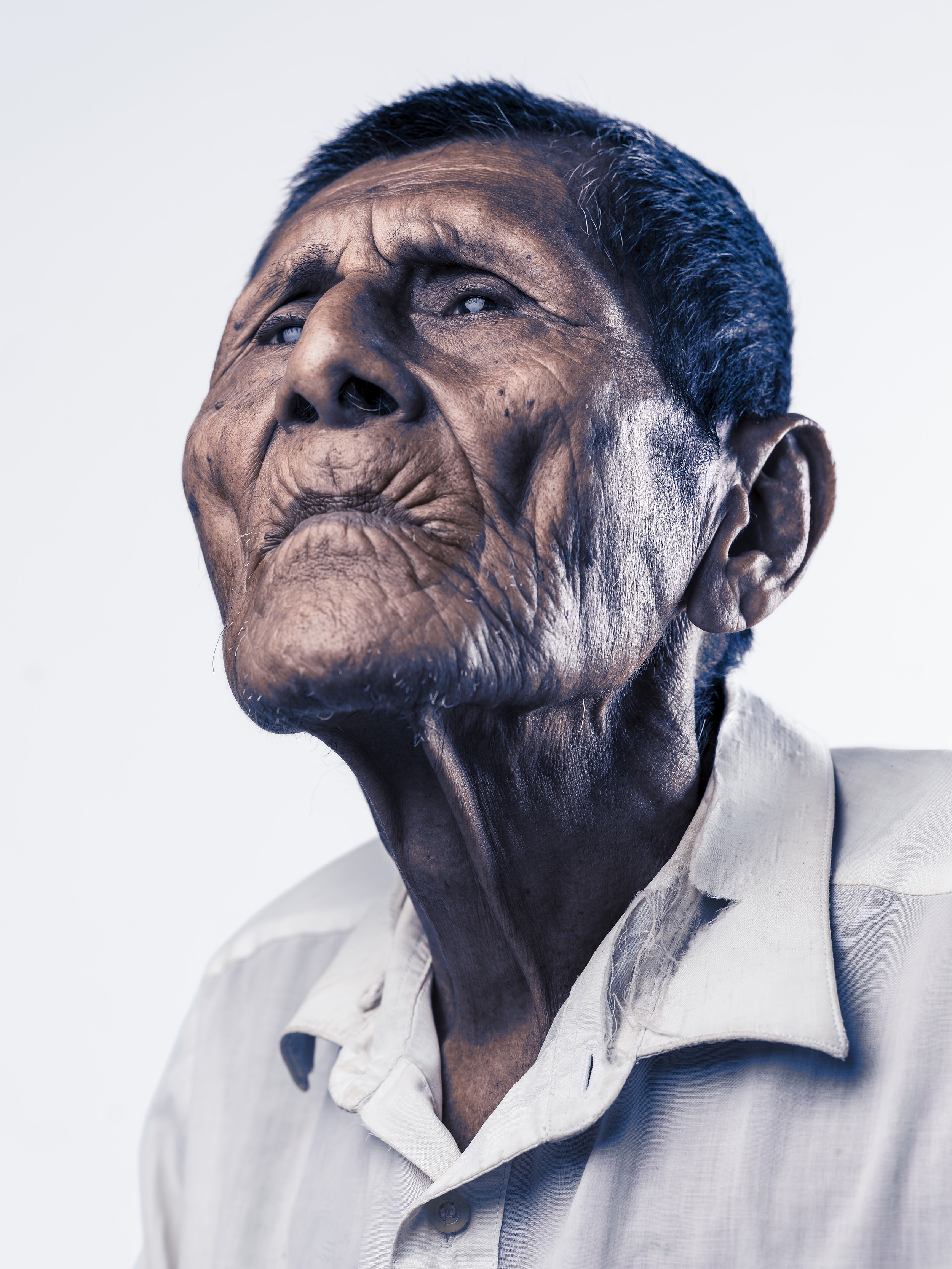
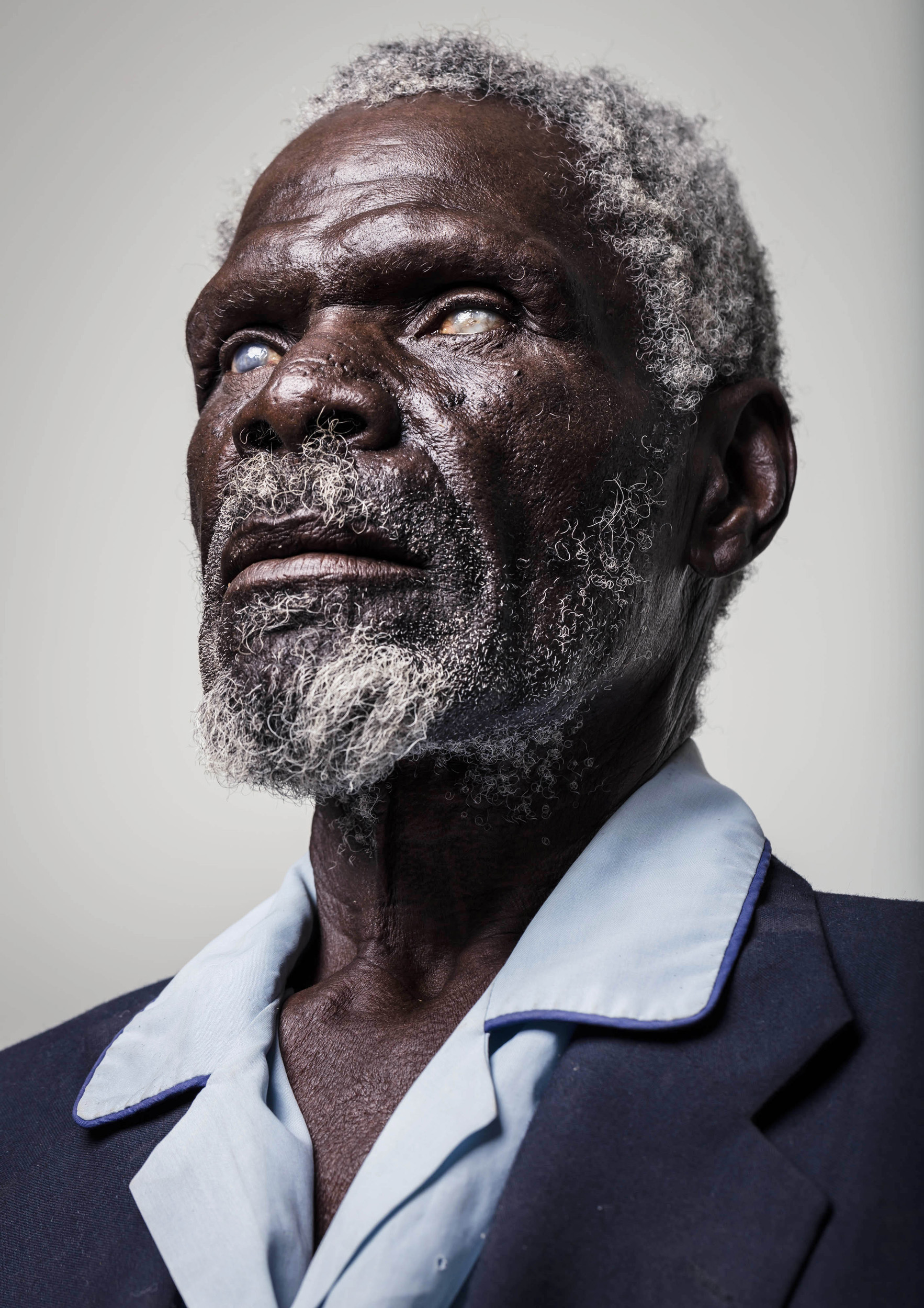
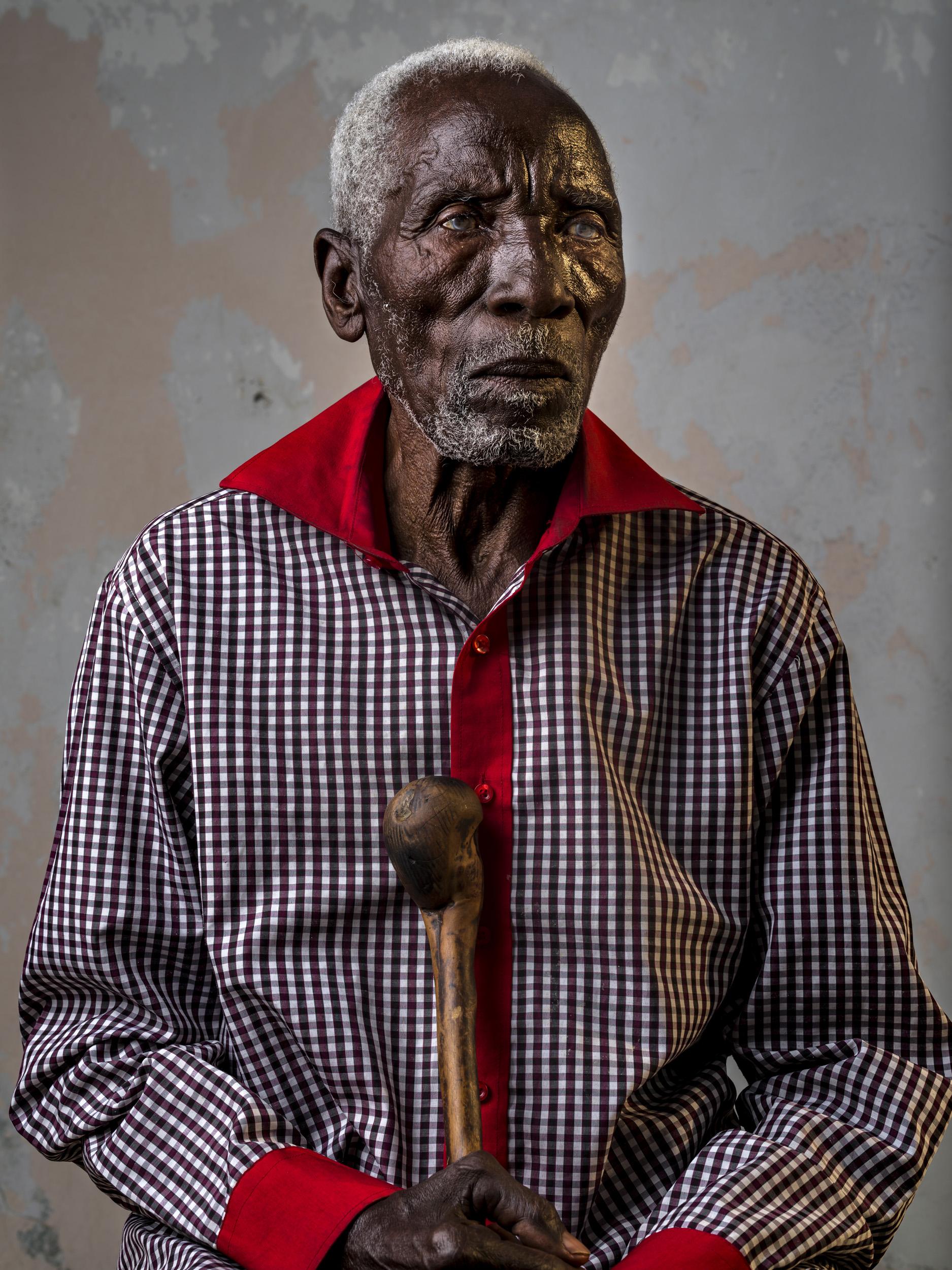


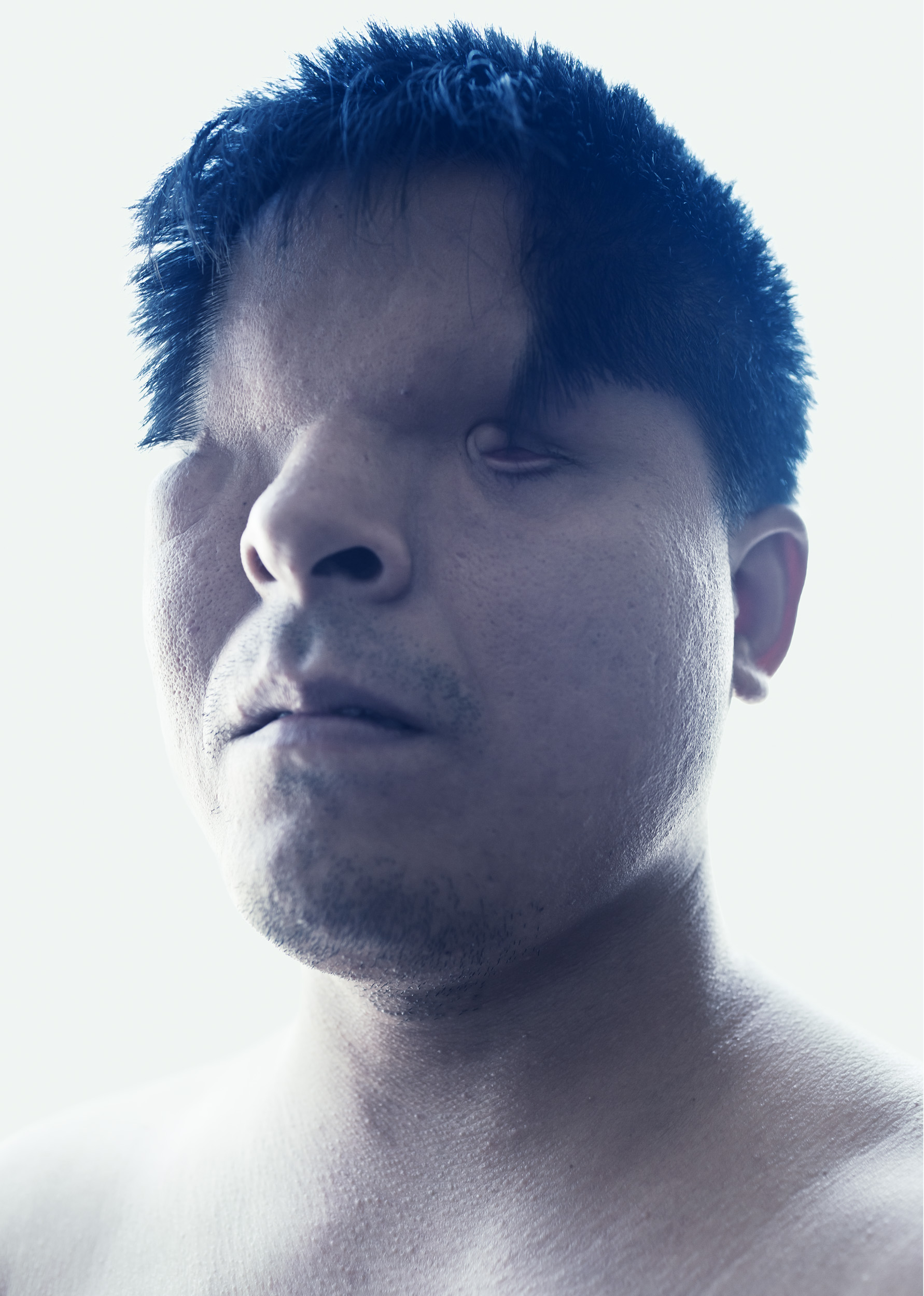
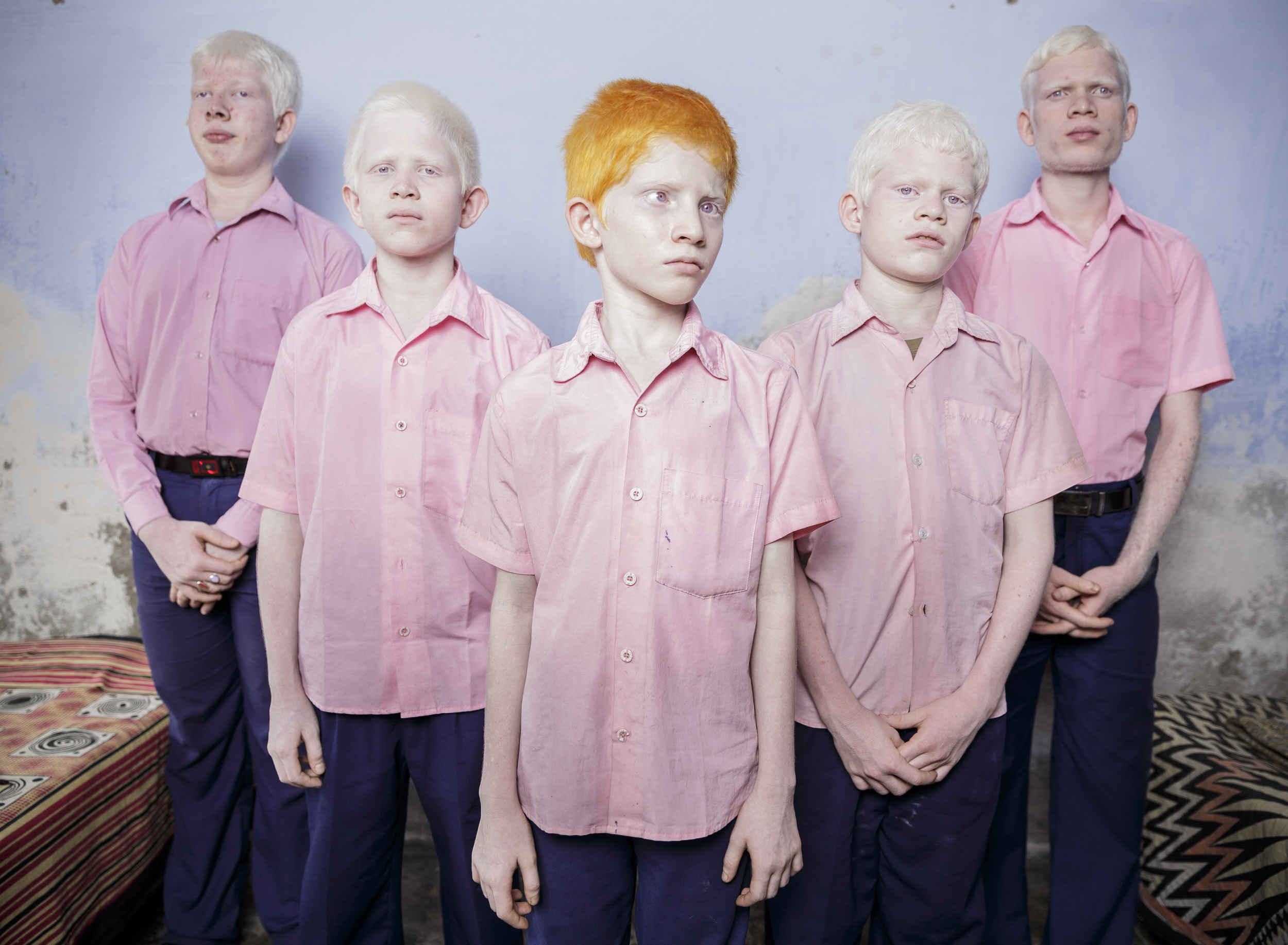

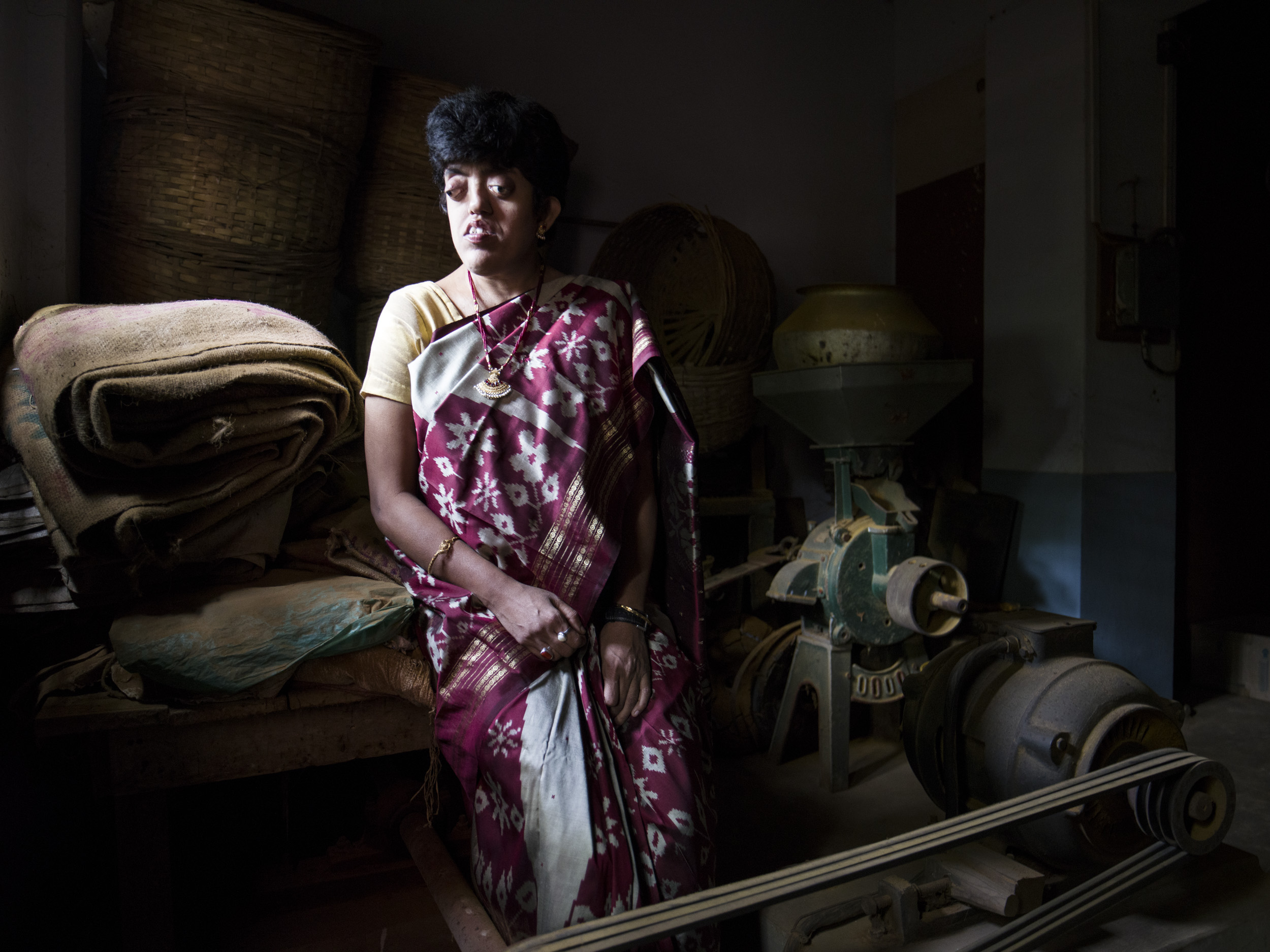



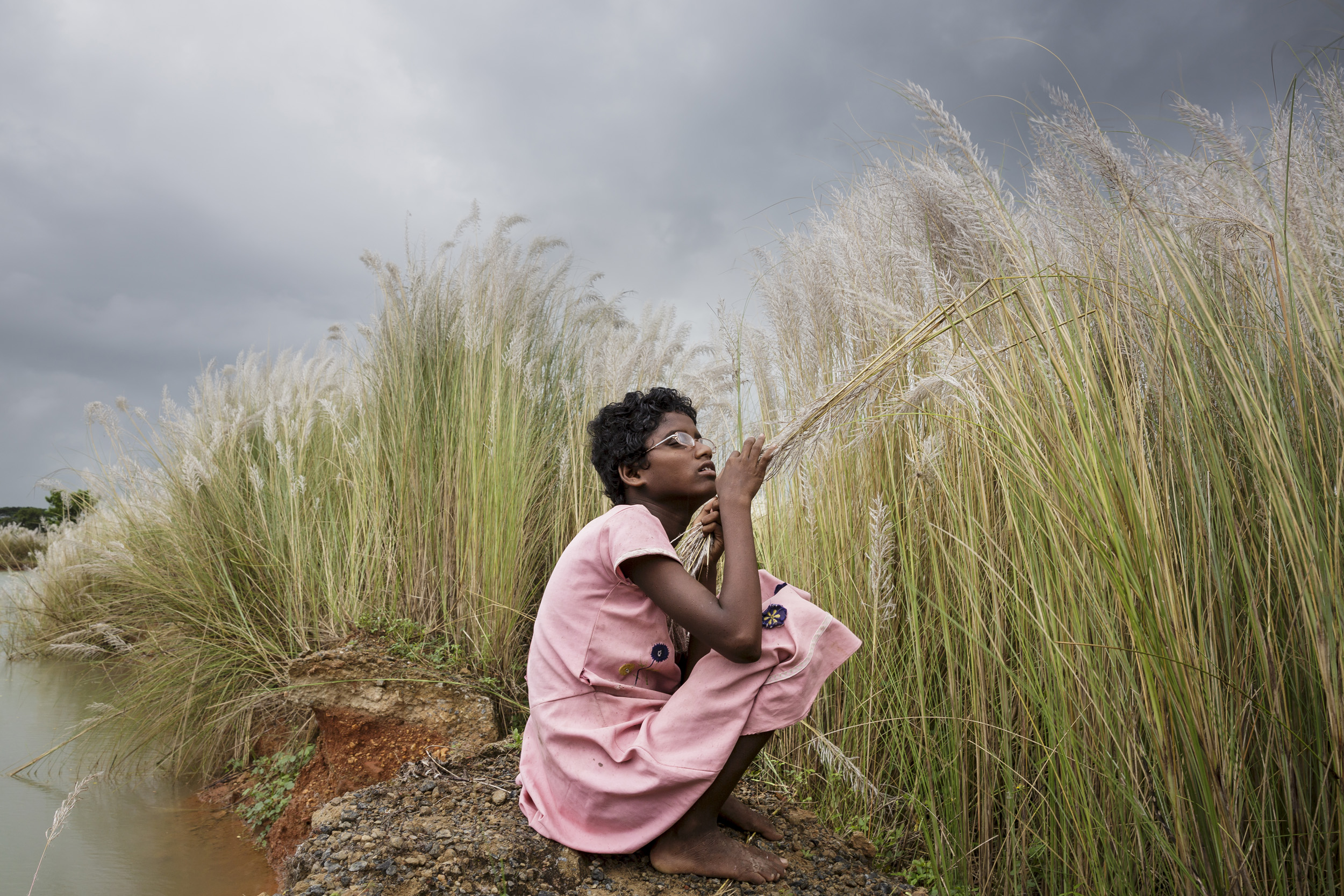
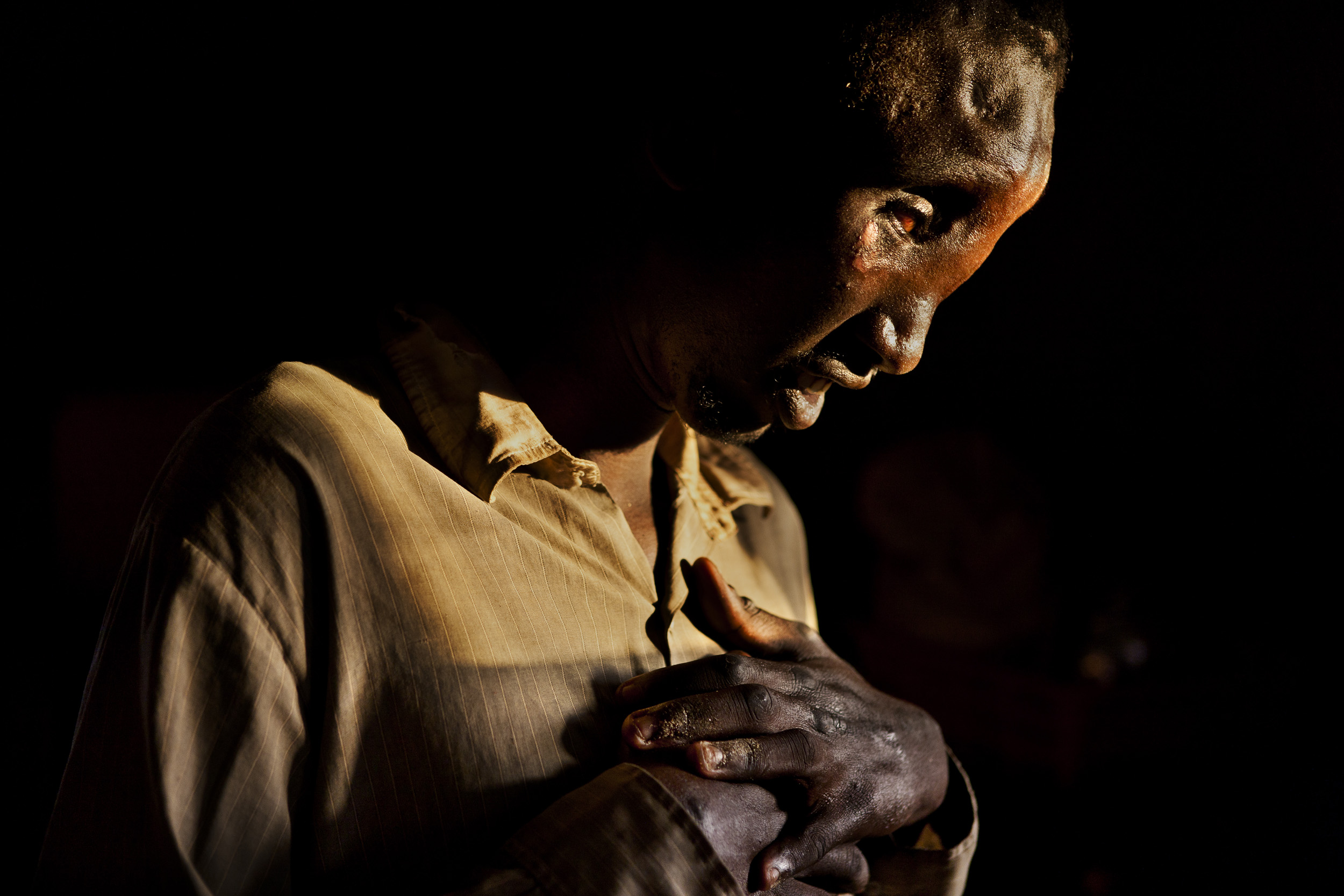
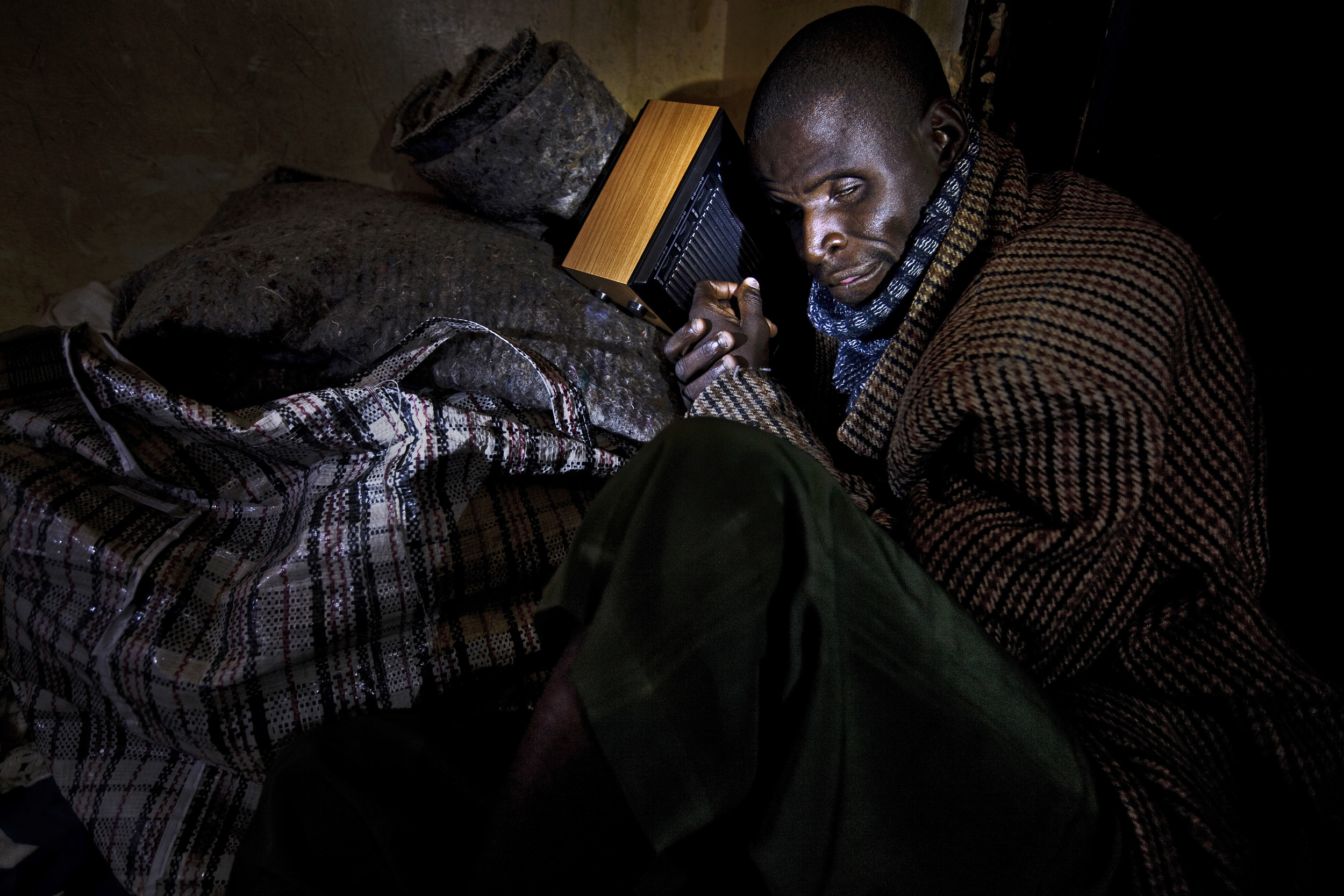
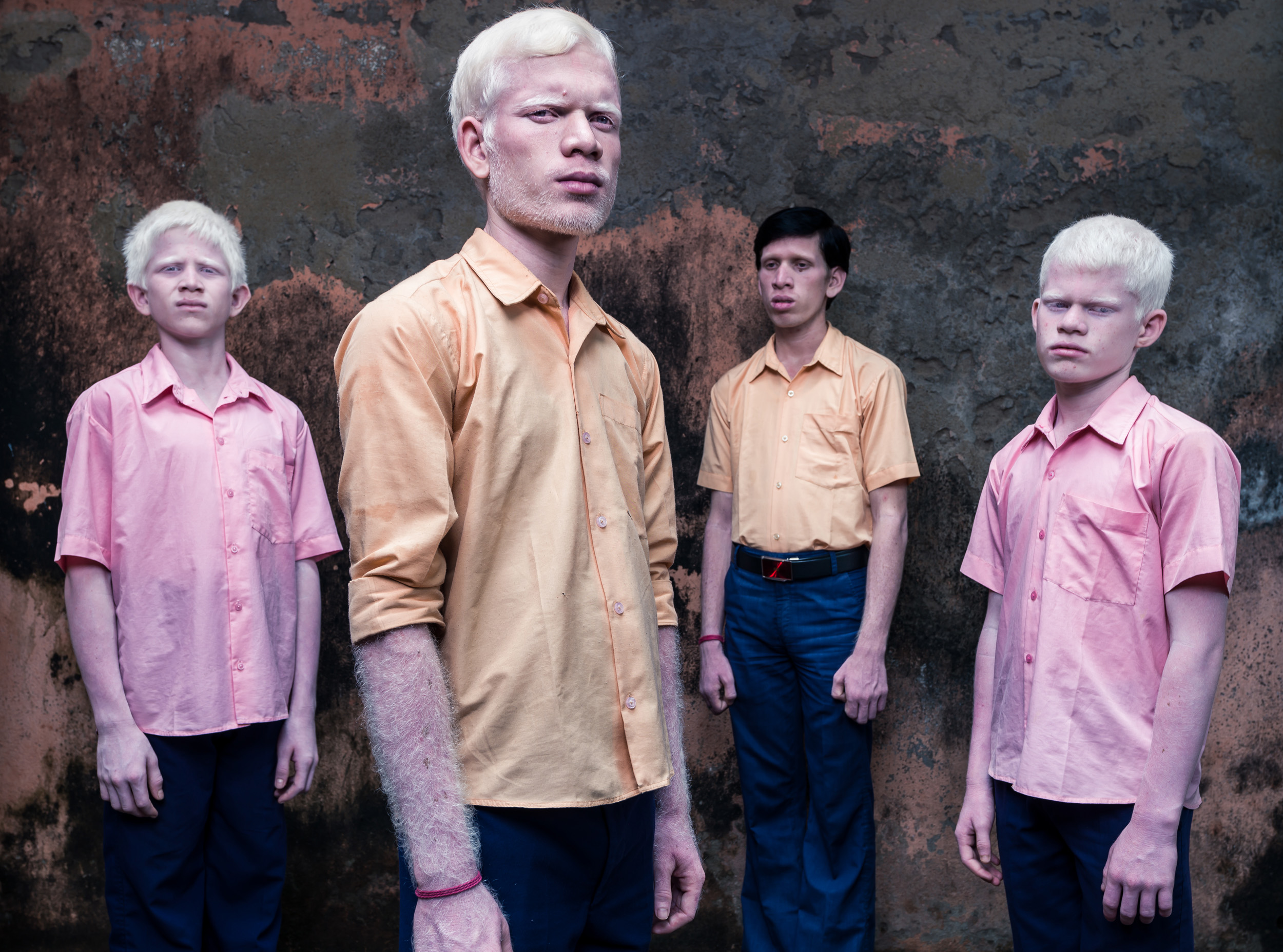
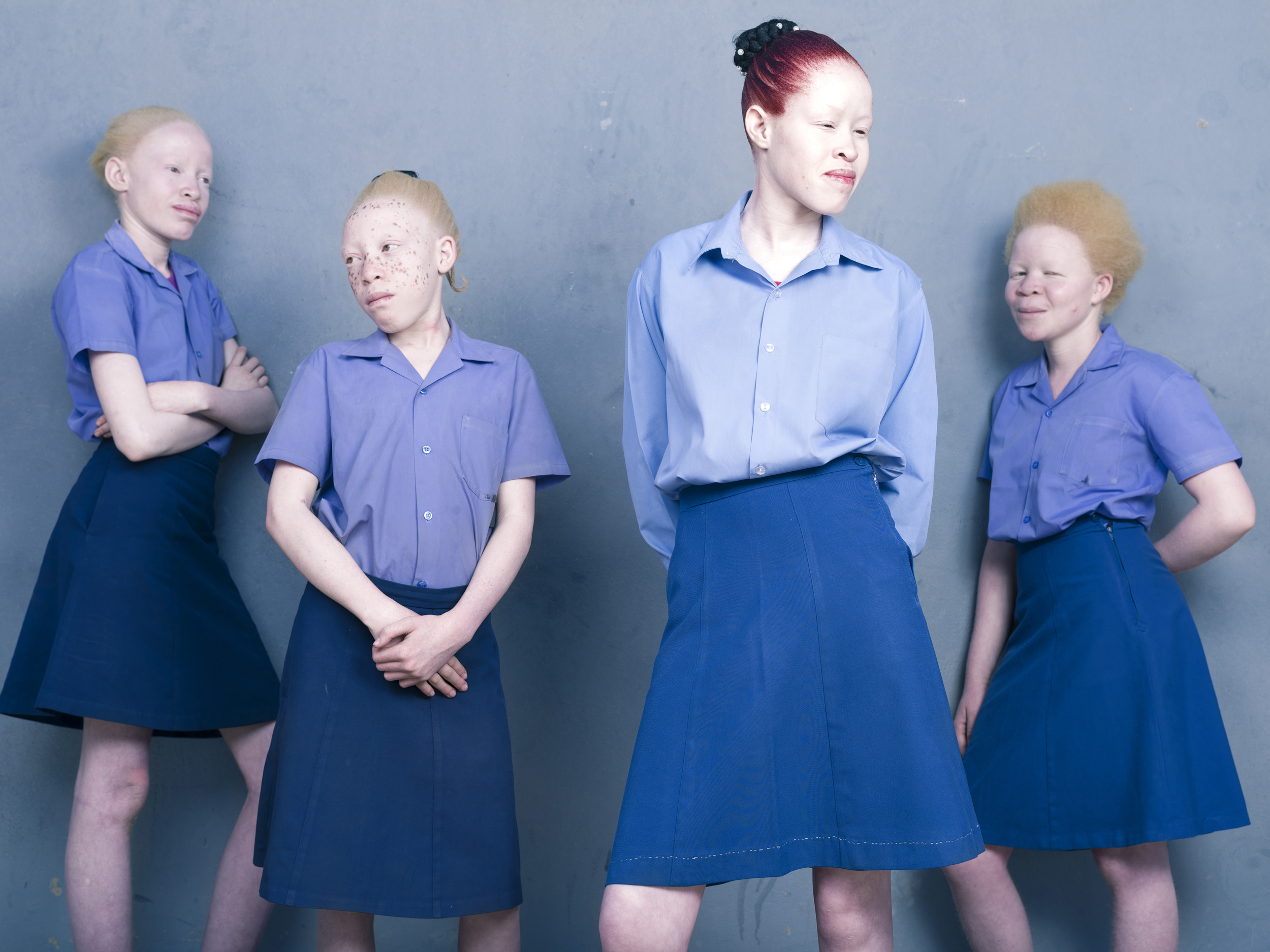
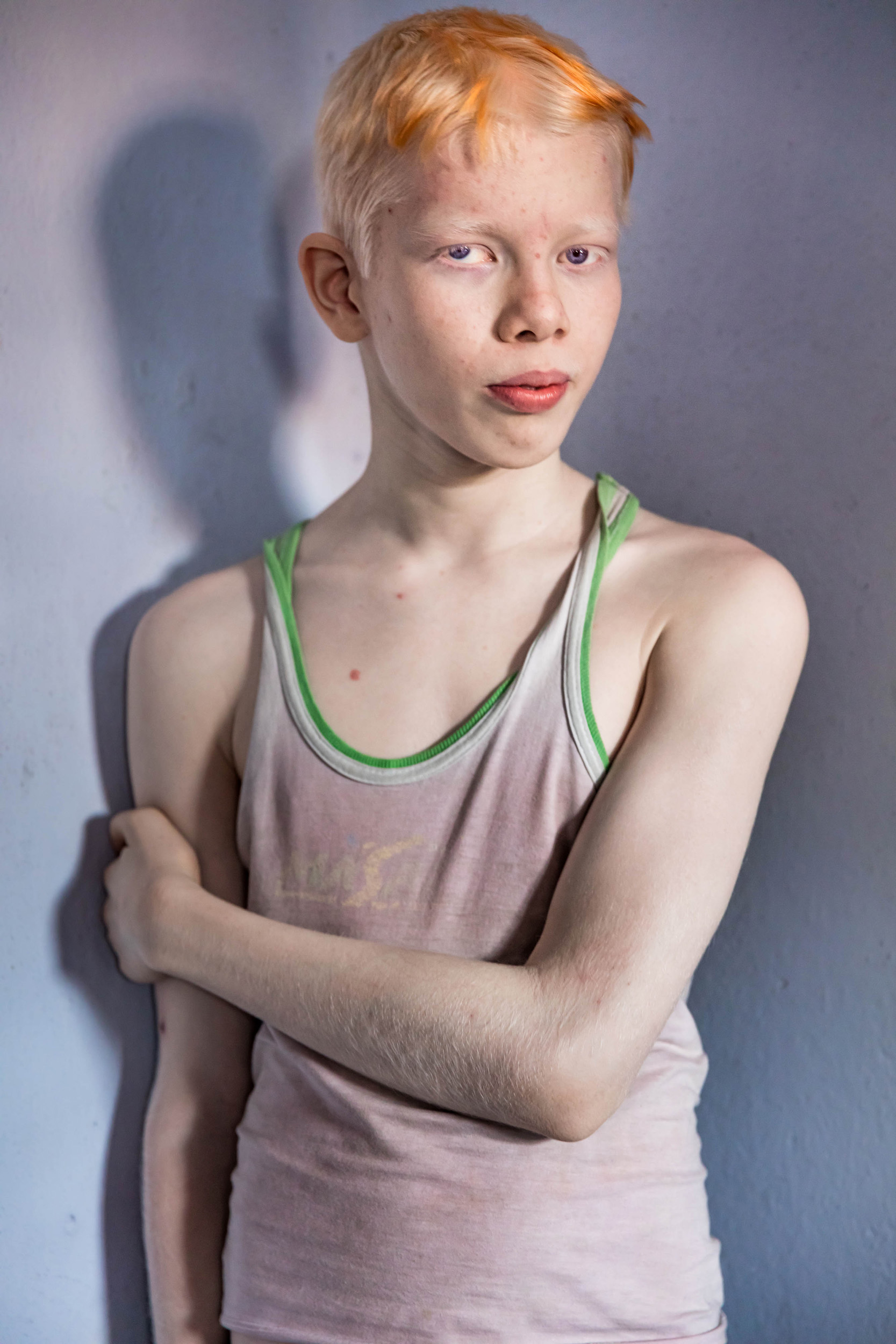
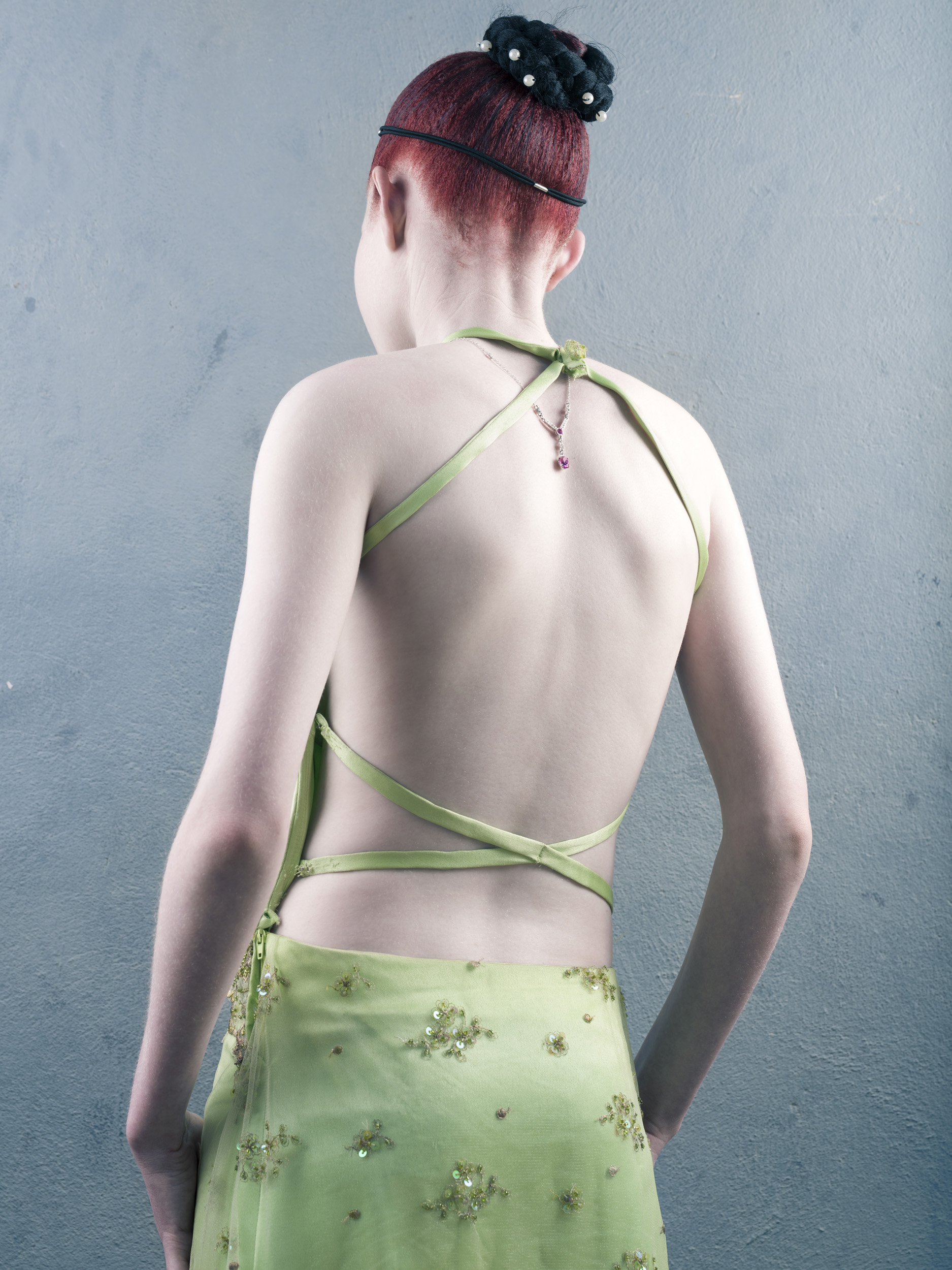
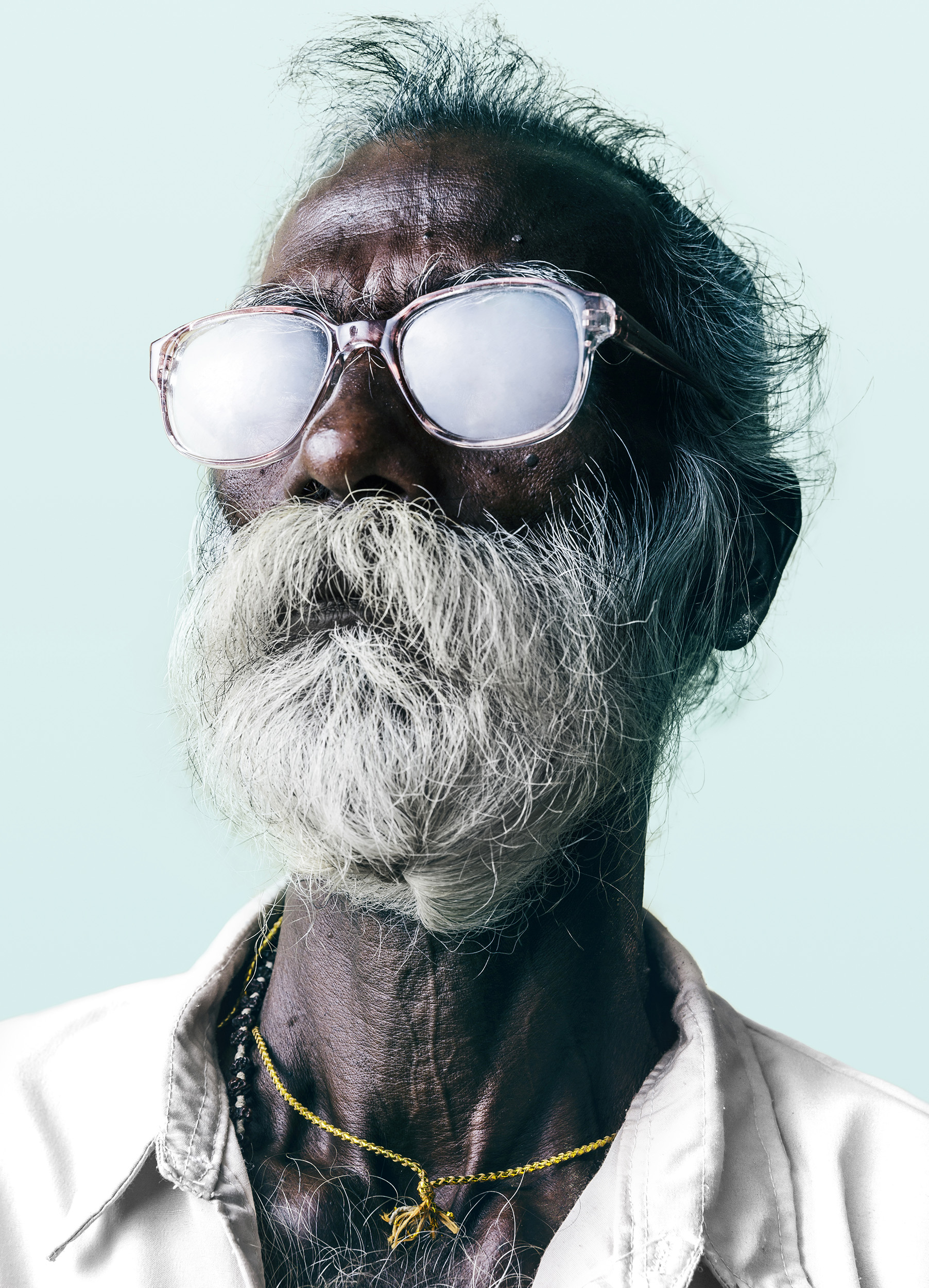
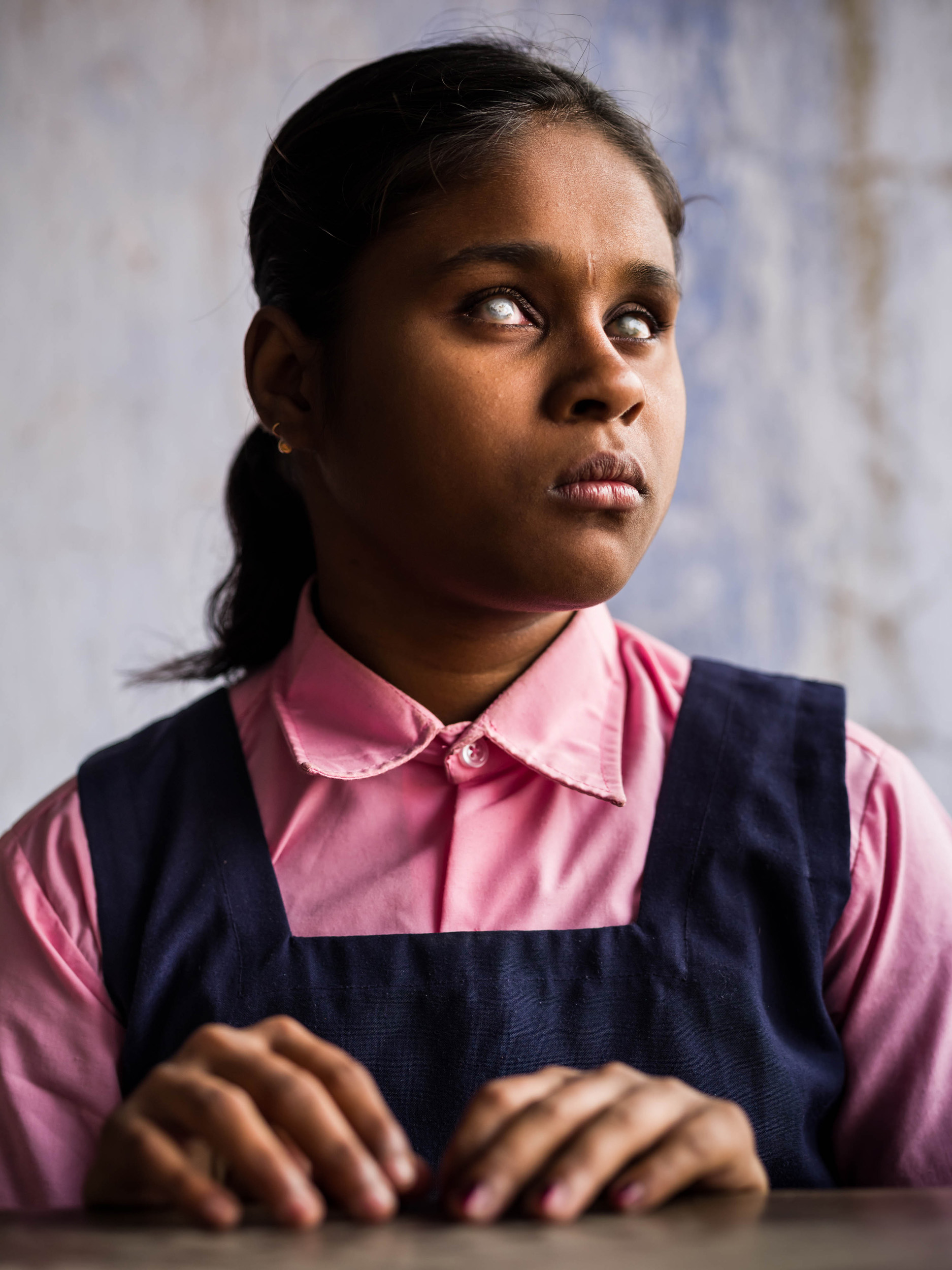

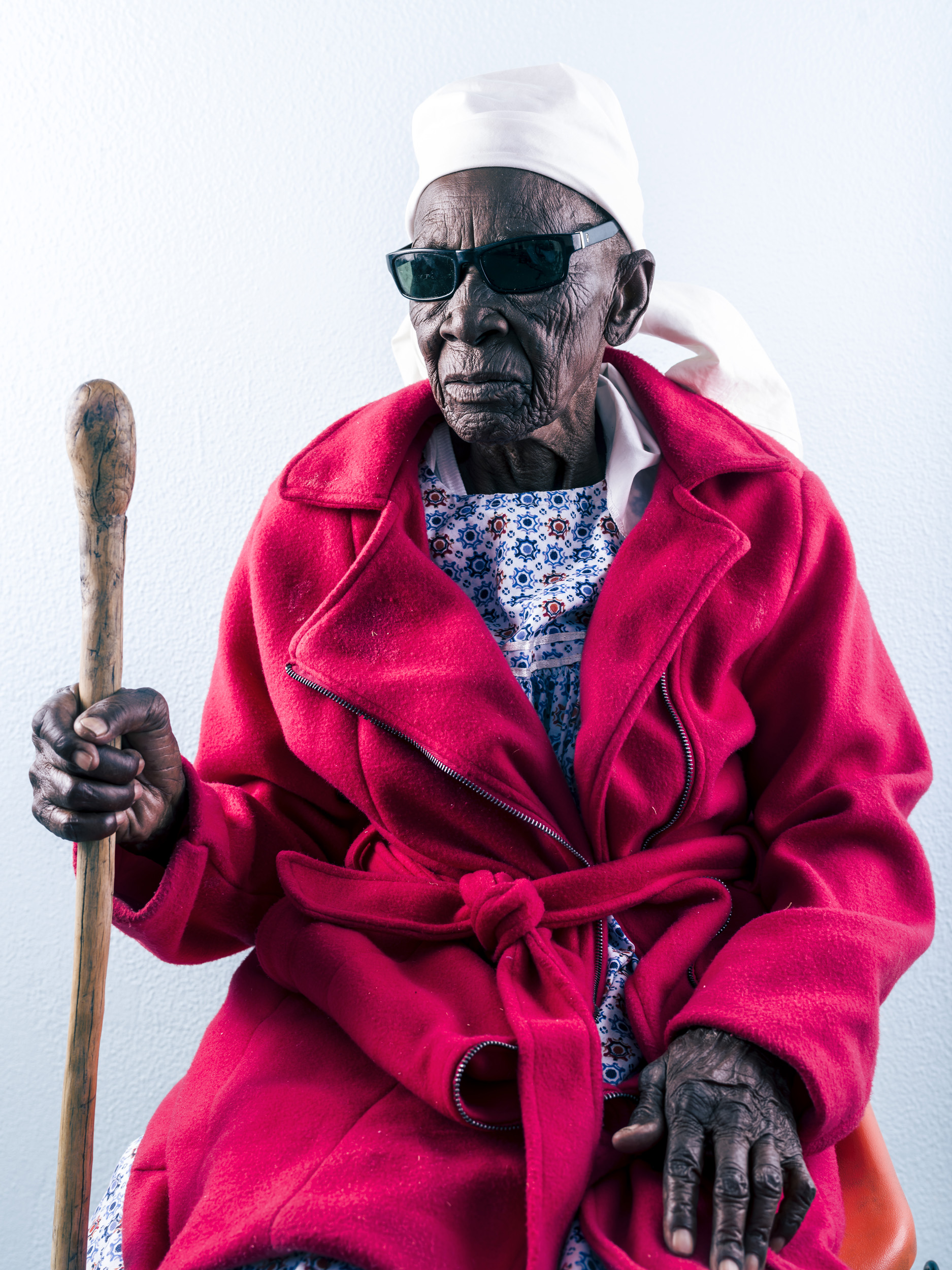
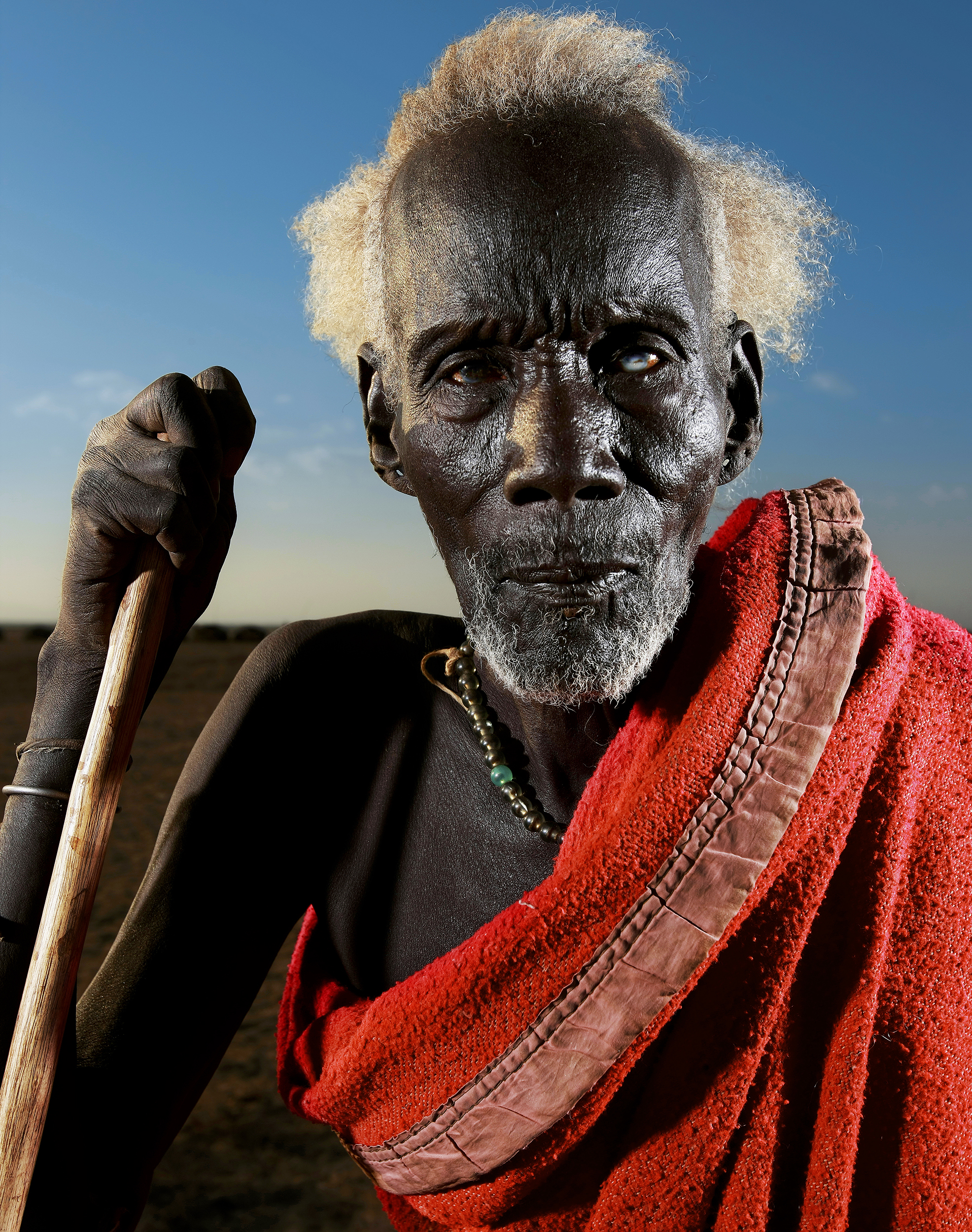

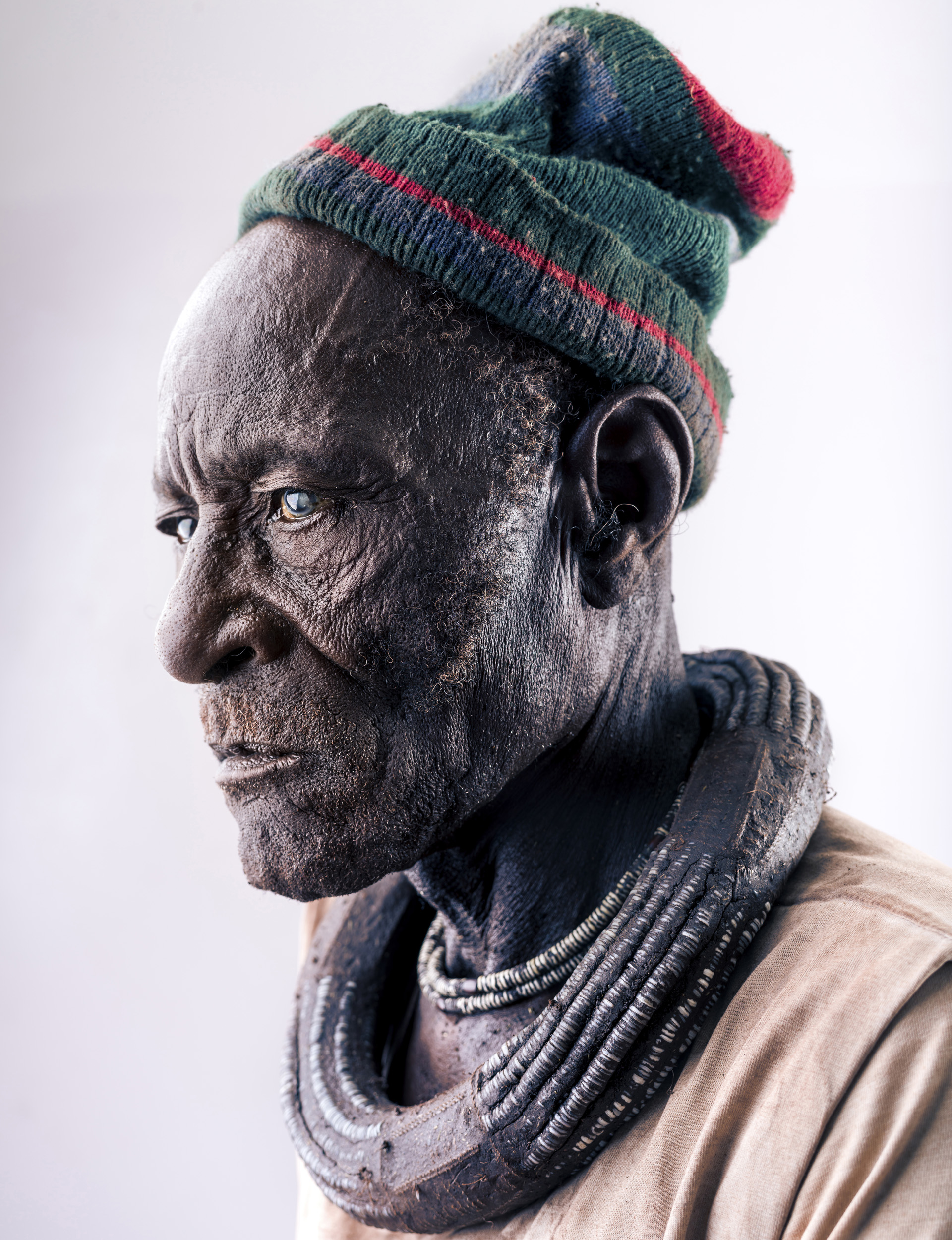
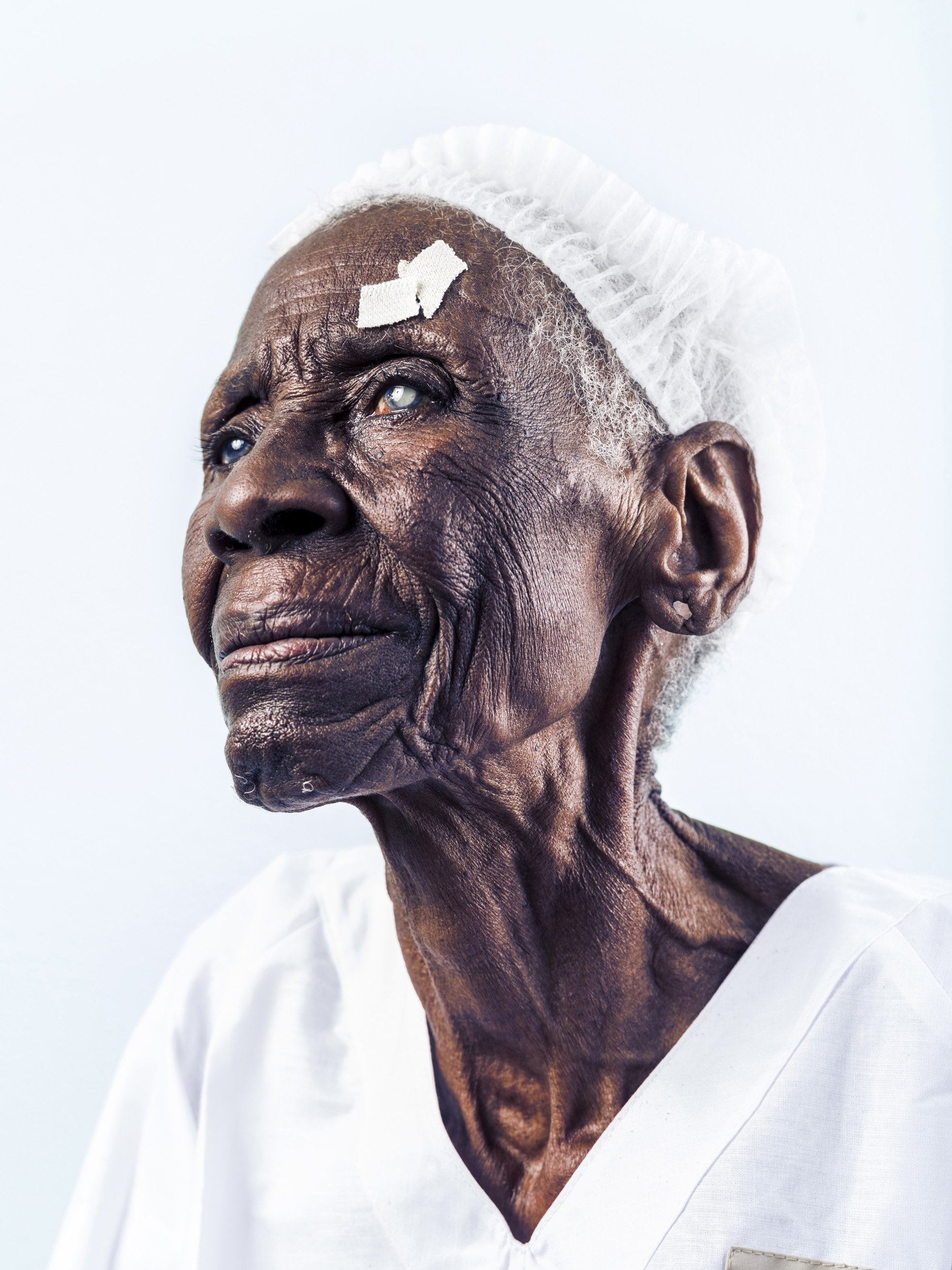
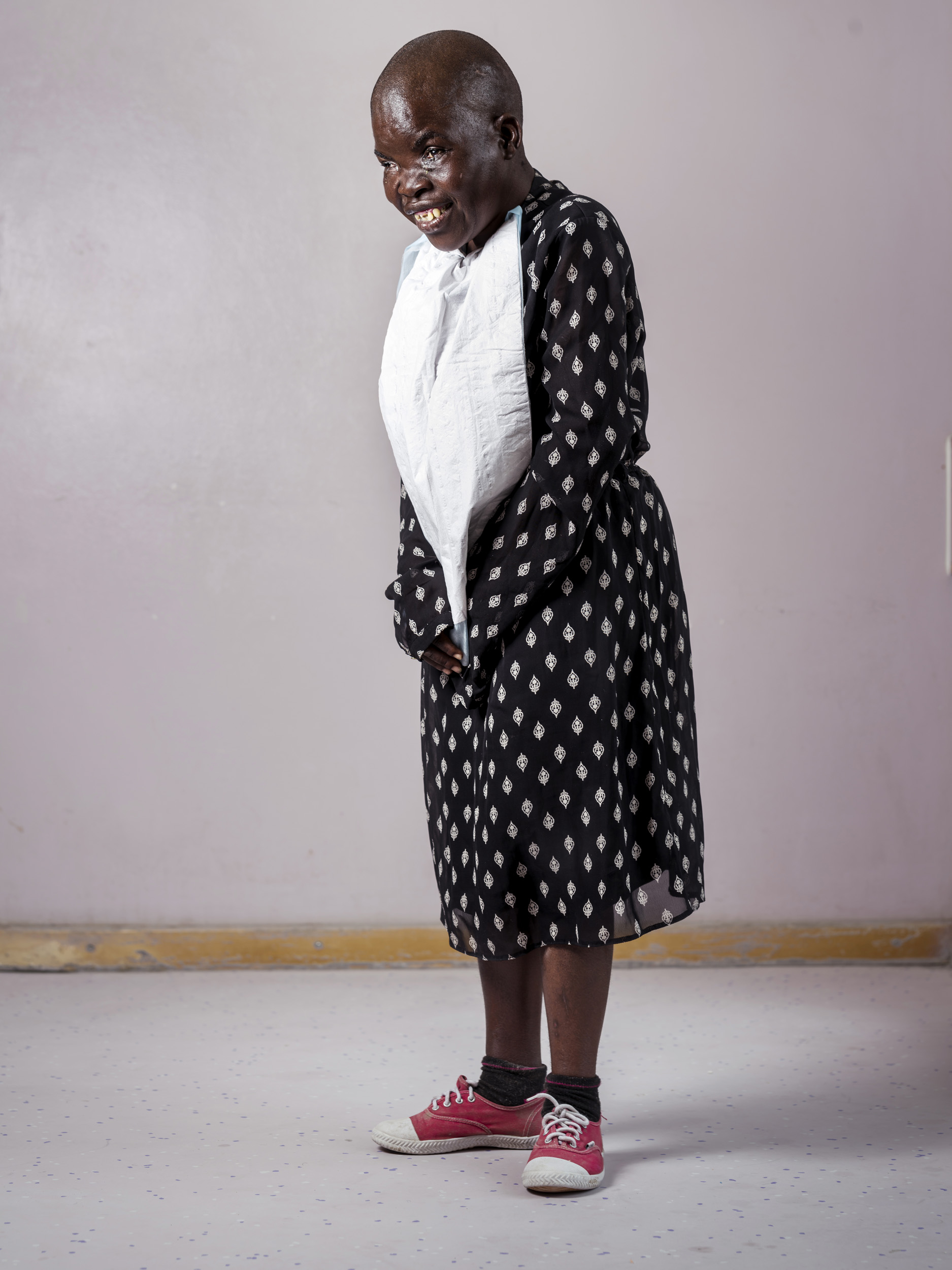
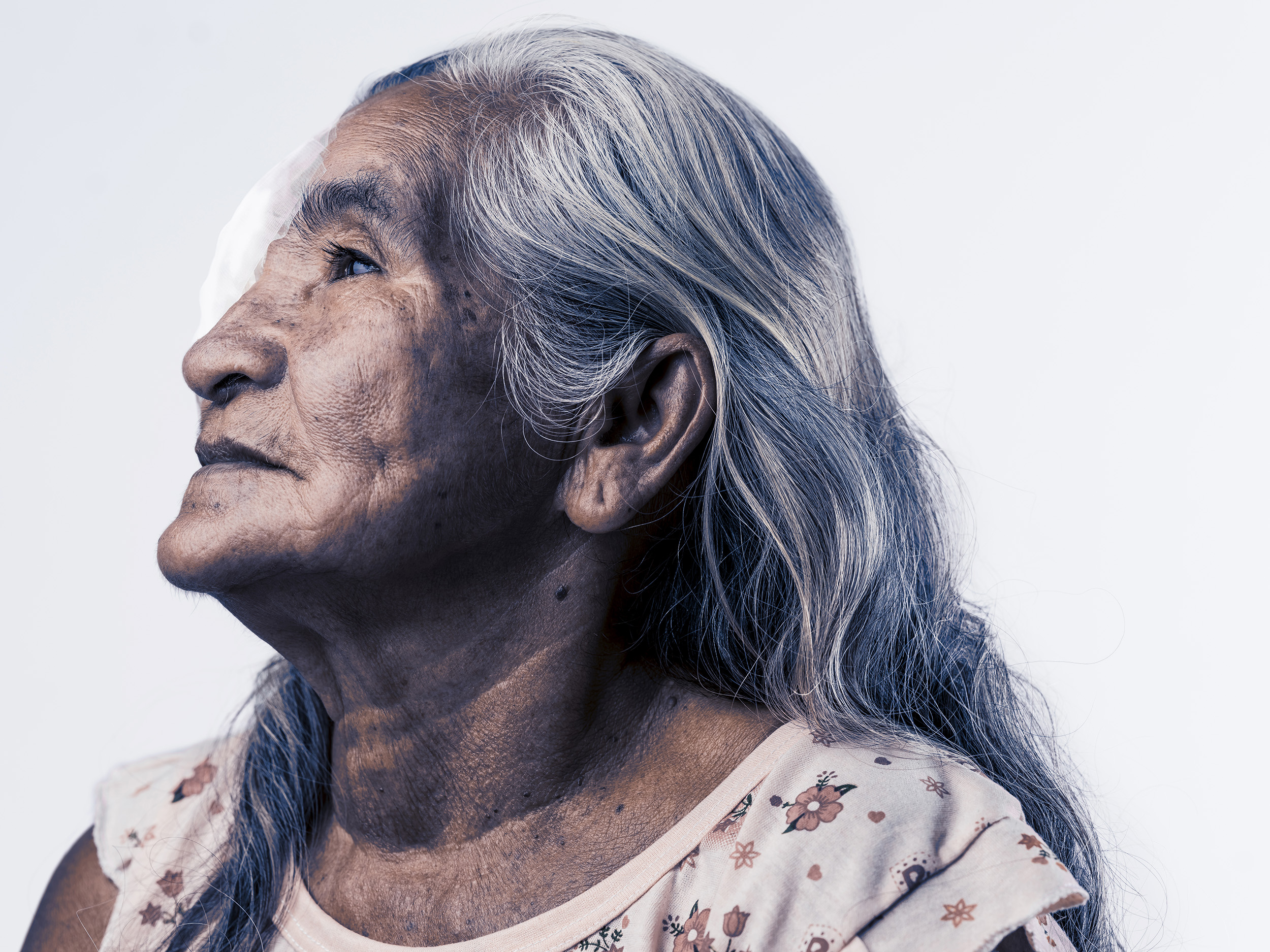
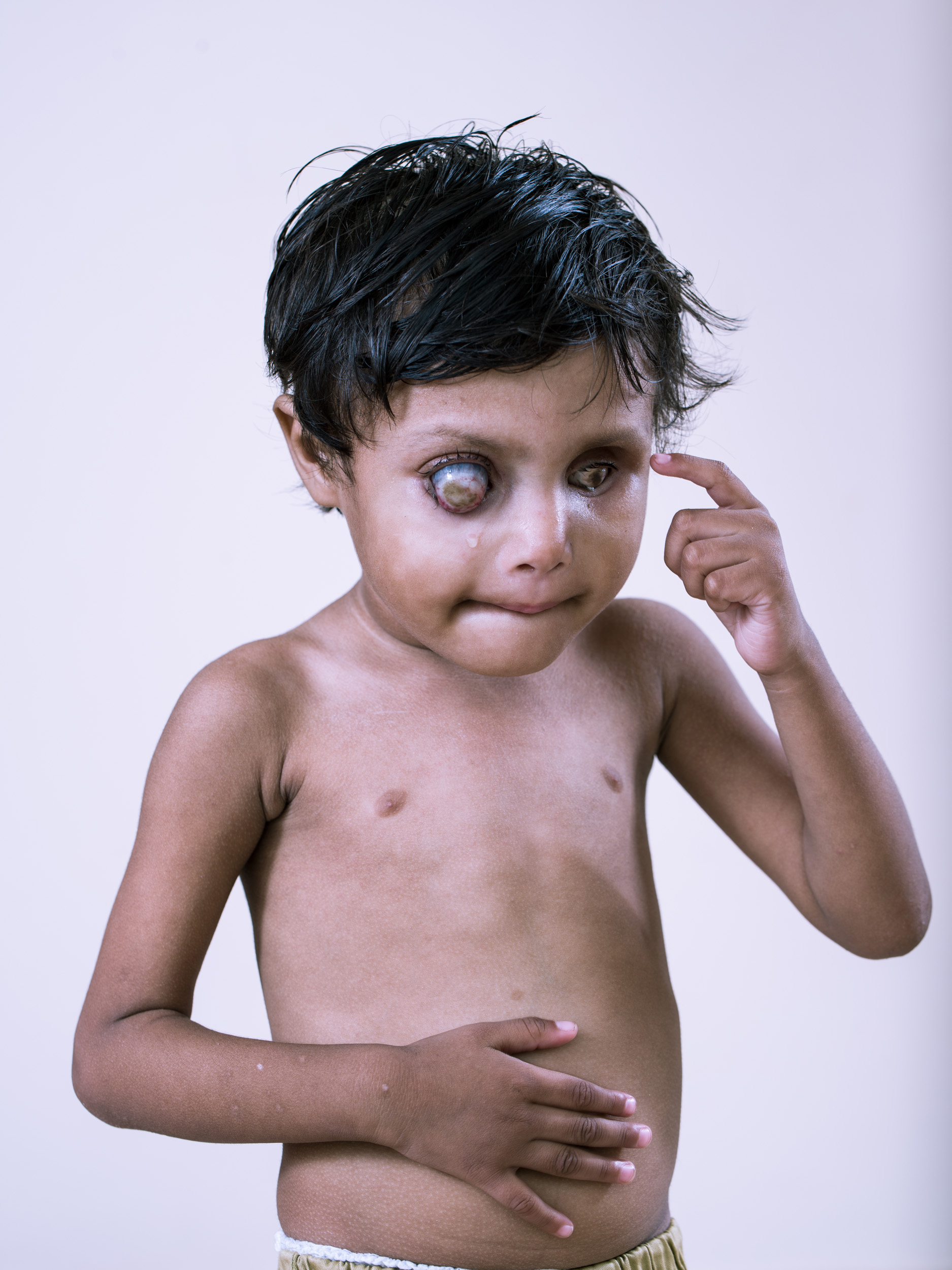
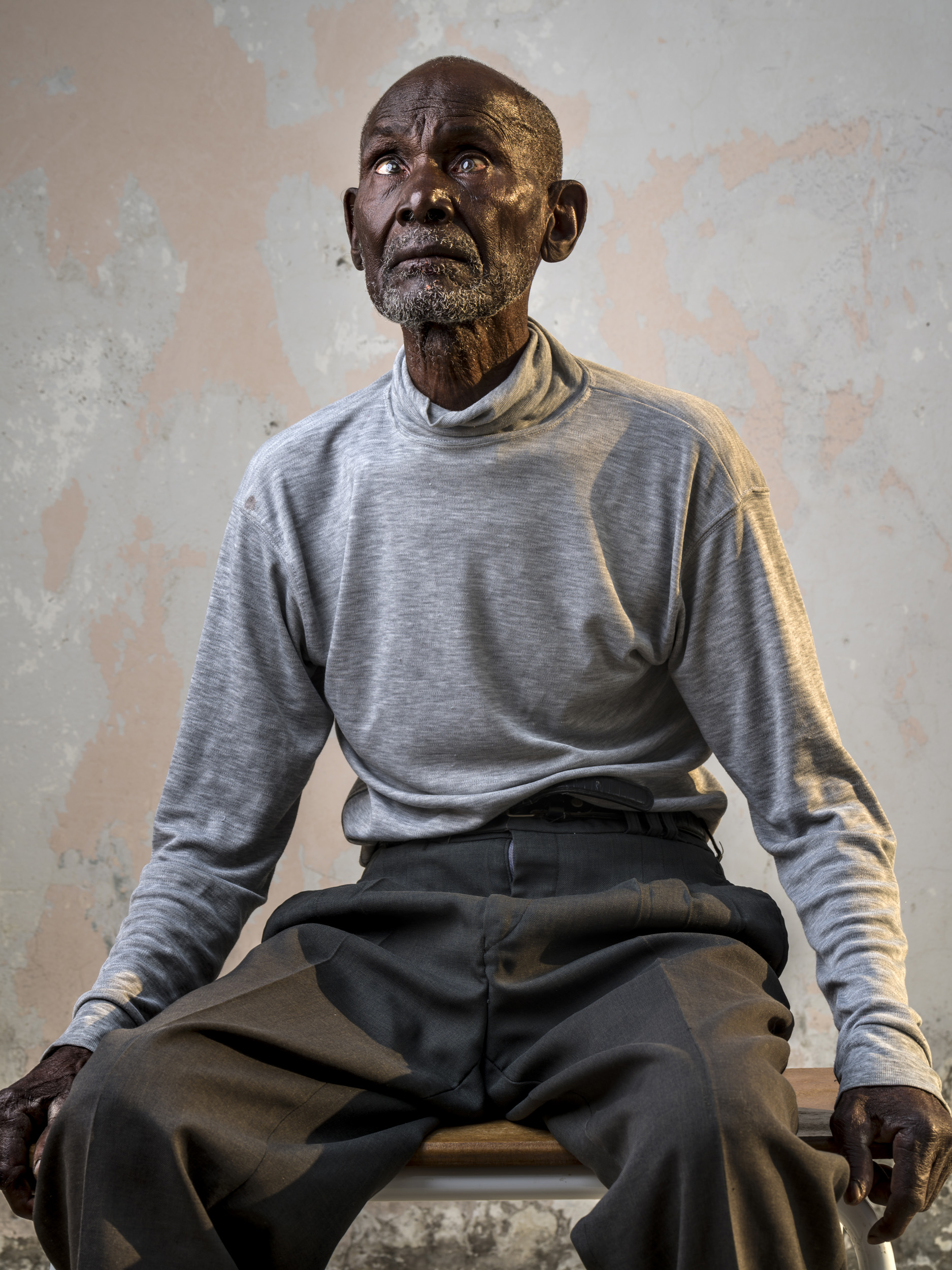
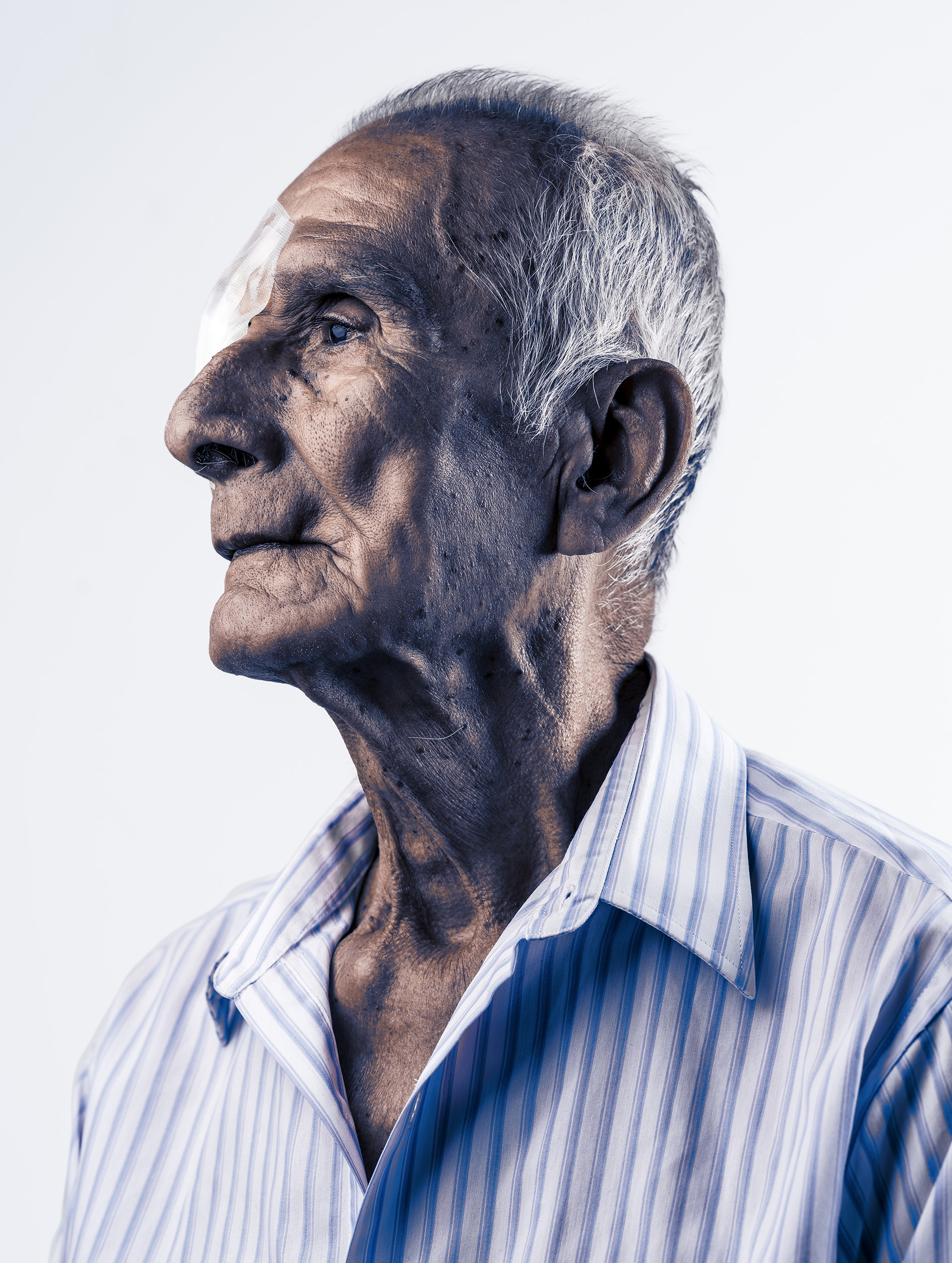
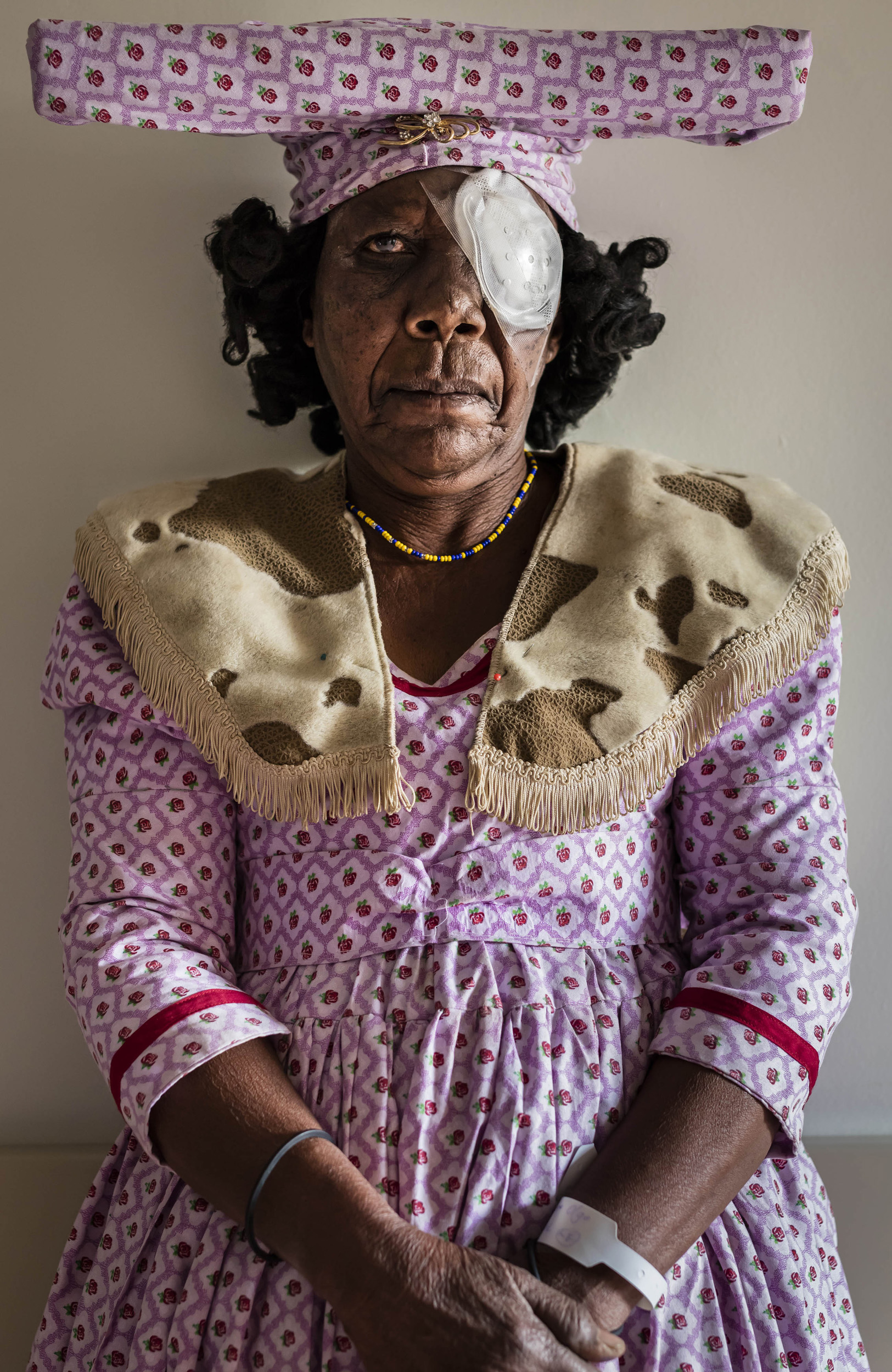
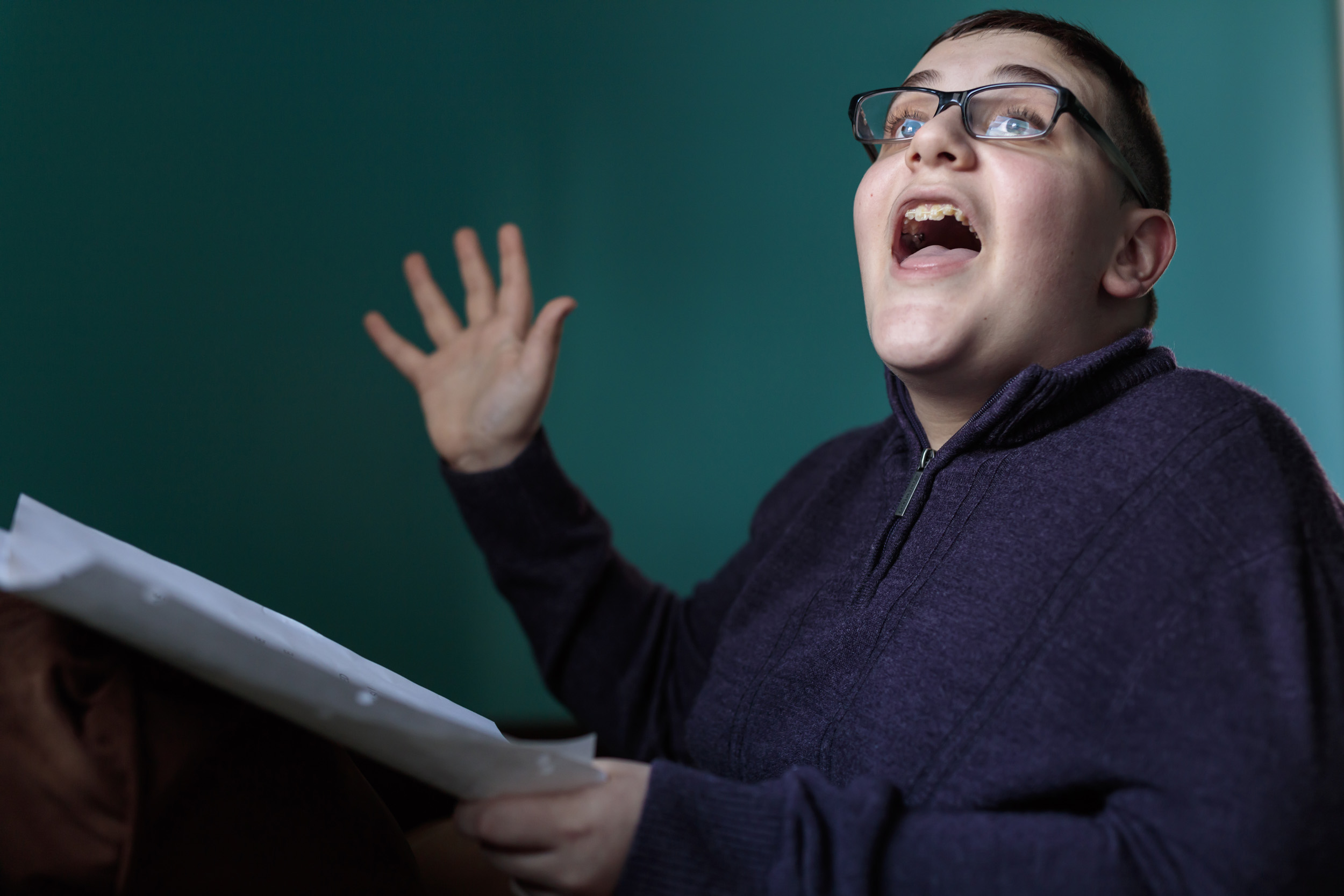
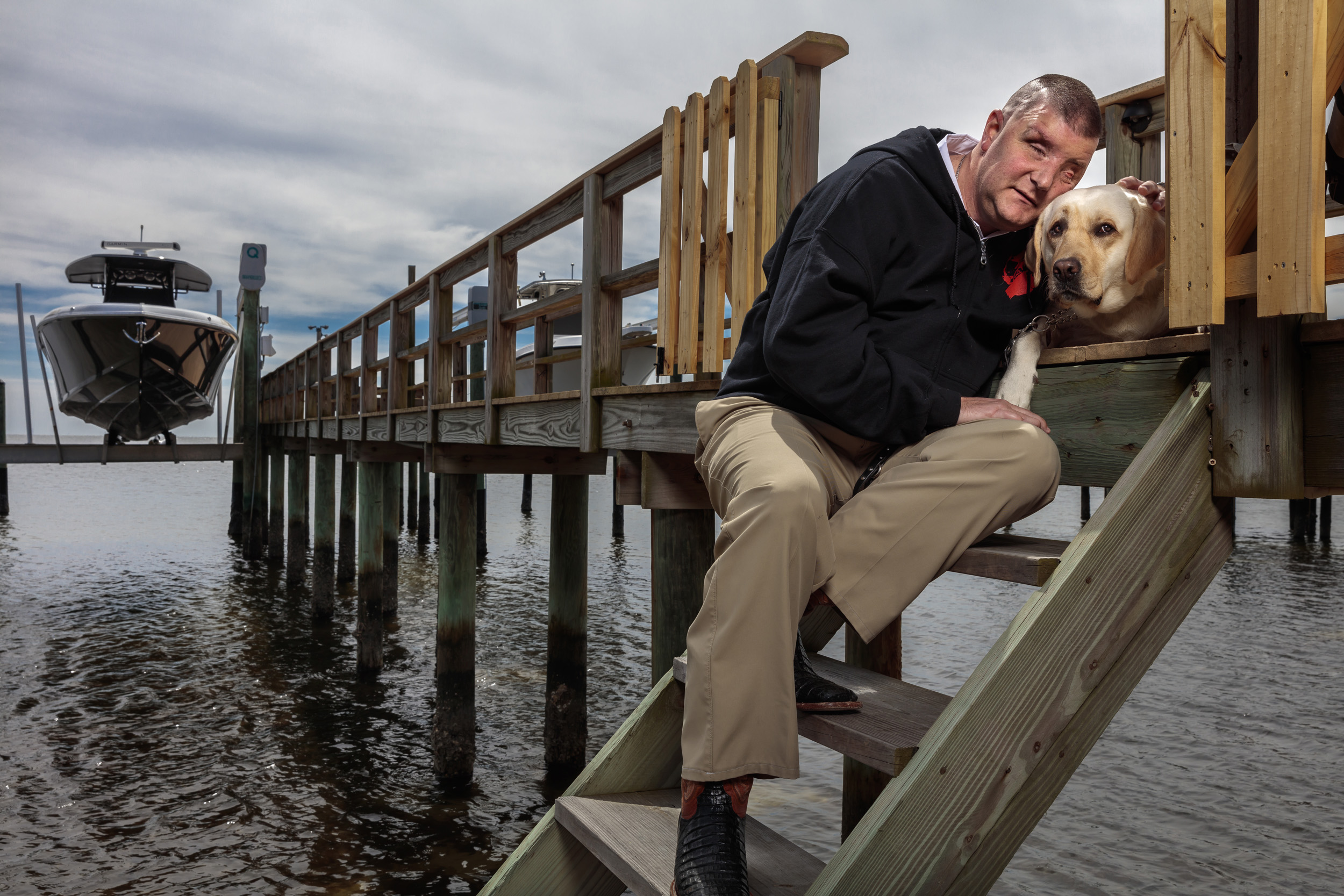
TARAPOTO, PERU, AUGUST 2017: Portraits of patients at a SEE International Eye camp in the Peruvian town of Tarapoto. SEE offers free eye surgery to poor communitie around the world who cannot afford or access eye care any other way. SEE relies on donations to make this happen. In this camp, volunteer doctors from India, the USA and Peru performed over 100 surgeries on people who came in from over 5 hours away. Cataract surgery is a relatively simple procedure to perform that takes ten minues. Those ten minutes are life changing for most of the people who can access it. (Photo by Brent Stirton/Verbatim Agency)
OMARURU, NAMIBIA, 5 November 2015: Gerd Gamanab, 67, is a completely sightless man hoping for a miracle at a blindness camp in Omaruru District hospital in Namibia. He lost his sight to 50 years of farm labour in the Namibian sun and dust, which destroyed both of his corneas. This kind of blindness is the result of living in remote locations with prolonged exposure to fierce elements and no eye care anywhere nearby. A lack of education as to what was happening to his eyes also allowed this to occur. These camps are held all over Namibia and cater to sections of the population that do not receive regular eye care, mostly as a result of poverty. The applicant are screened and if the diagnosis is a mature cataract, they are selected as candidates for a simple operation which in fifteen minutes lends signicant sight to their world. The cataract is removed by a surgical vacuum and a new lens in inserted. Bandages are removed the next day and in most cases a real improvement in vision is the result. (Photo by Brent Stirton/Reportage for National Geographic Magazine.)
HANOI, VIETNAM, OCTOBER 2011: Pham, 32, a man born without eyes due to Agent Orange contamination which affected his father while he fought as a soldier in the Vietnam war, Hanoi, Vietnam, October 10, 2011. (Photo by Brent Stirton.)
Jose Rosas Vallalobos, 56, started losing his sight after a car accident, a trauma for which he was never treated. He also developed cataracts in both eyes that have caused him to lose further vision until he was completely blind. Jose has a large family that depend on him for their survival. He bought a home for which he paid off half and then intended to work off the other half in his small coffee plantation. His complete blindness has prevented him from doing so and his children and his wife now work the plantation in an effort to stave off their creditors. Jose feels a deep shame about this, he regrets he is not able to contribute to his family and feels he is a burden. His wife also has to guide him everywhere and in all things, he feels terrible about this. Two of Jose’s children, Wilder, 19, and Maria, 21, are also legally blind. Both have detached retinas and cataracts. A Peruvian doctor visited this family in their home town while canvassing for a blindness camp, she told the family that they should come to Tarapoto, a town three hours away for a SEE International eye camp where they can receive free surgery for their cataracts. Jose and his family came to the camp. Unfortunately, both the children were not eligible for surgery as their eyes were diagnosed as beyond help. If they had come to surgery sooner, it is possible they could have been helped. This is typical of people in rural areas with no access to eye care and illustrates to importance of immediate action if at all possible. Jose was diagnosed as having a very slim chance for any sight recovery after surgery, due to the advanced age of his cataracts and subsequent potential nerve damage. His sister was told that she had the best chance but that it would not be more than ten percent of sight, enough to be independent at least. After a difficult surgery on Jose, Dr Preeti Shah, a SEE doctor from India, was able to install a new lens in one eye and Jose’s recovery has been far better than expect
LAKE TURKANA, NORTHERN KENYA, MAY 2010: A mentally handicapped and blind Dasenetch man, Michael, 20, in Lake Turkana North Kenya, 20 May 2010. A lack of access to proper medical care resulted in brain damage when Michael was born. His mother says he was sighted until he was 12 but lost the ability to see. This has made him a burden in his community and totally reliant on others. It remains an important priority for pastoralist tribes all over Kenya to have access to medical care in their communities in order to secure the well being of their people. (Photo by Brent Stirton/Reportage by Getty Images.)
JOHANNESBURG, SOUTH AFRICA, JUNE 2009: A blind Zimbabwean refugee photographed in slum dwellings in inner city Johannesburg, South Africa. Most of the blind are in South Africa illegally and lack official papers and ID documents which might help them to apply for limited charity. This man was part of a group of over 20 blind people who made the journey with the help of two sighted people. They say they fled a complete lack of economic opportunity in Zimbabwe's failed state and had no choice but to come to South Africa to survive. They could no longer beg for their survival in Zimbabwe as people simply no longer have anything to give. As a result many of these blind people have made long journeys with their guides, families or by relying on the kindness of strangers. They crossed the Limpopo River to avoid the border authorities and lived in the bush for many weeks before being able to organise a ride by train or bus down to Johannesburg. All of this they did for the opportunity to beg in a more affluent economy. (Photo by Brent Stirton/Reportage by Getty Images.)
Blind Albino Boys - Vivekananda Mission School for the Blind - India, West Bengal, September 19, 2014.
VIVEKANANDA MISSION ASRAM, HALDIA, WEST BENGAL, INDIA, JANUARY 14, 2016: A young boy with severely impaired vision seen in the hostel residence of the Vivekananda Mission Asram school for the blind. This is the highest rated school for blind children in India, the country with the highest number of blind people, arond 1% of their population, approximately 12 million people. Vivekanda Mission Asram provides care to some of the poorest of blind children, providing them with an education and tools for life survival once they leave the Asram after graduating. The children learn a normal school curiculum through braile and a team of dedicated teachers. Vocationa training is also available at the Asram in weaving, candle making amongst other skills that can add meaning to a blind life in India. Most of the blind in India end up as beggars, this school offers students a chance to be more than that. A number of their students have gone on to become senior teachers for sighted pupils, lawyers and business people. In these images the boys and girls are seen attending school lessons, learning Braille, music as well as scenes from their hostel residence and sports activities. (Photo by Brent Stirton/Reportage for National Geographic Magazine.)
VIVEKANANDA MISSION ASRAM, WEST BENGAL, INDIA, 14 JANUARY 2016: Annya Polley, 15, has been a pupil at the Vivekananda Mission Asram School for the blind for two year. She lives at the school residence and says that she attends Vivekananda because her previous school could not cater for her blindness and she was neglected. This is often the case for children around the world who live with severely impaired vision. Vivekananda is regarded as one the best schools of its kind in India but there is shortage of these facilities in a country with the largest numbers of blind people. (Photo by Brent Stirton/Reportage for National Geographic Magazine.)
OMARURU, NAMIBIA, 1 NOVEMBER 2015: A blind Damara Nama woman, Theresa Tsamasas, 85, is seen waiting to be screened after arriving from Okombei, a location over 100 kilometers away, at Omaruru District Hospital, Namibia. Theresa lost one eye to a stick when she was a child and now fears for her future as she has lost her only sighted eye to a mature cataract. These camps are held all over Namibia and cater to sections of the population that do not receive regular eye care, mostly as a result of poverty. They are often the result of donor efforts to make the surgery and lenses possible for impoverished communities. The applicant are screened and if the diagnosis is a mature cataract, they are selected as candidates for a simple operation which in fifteen minutes lends signicant sight to their world. The cataract is removed by a surgical vacuum and a new lens in inserted. Bandages are removed the next day and in most cases a real improvement in vision is the result. (Photo by Brent Stirton/Reportage for National Geographic Magazine.)
LORYRA, SOUTH OMO, ETHIOPIA, DECEMBER 2007: Images of the Dassanech people in the Lower Omo Valley, South West Ethiopia, 14 December 2007. (Photo by Brent Stirton/Getty Images.)
ANCHORAGE, ALASKA, 1 March 2016: When Dan Bigley was 25 he lost life as he knew when a bear mauled him, leaving his face ruined and his eyes blind after the incident. After relearning everything from how to match his socks to how to make a living, Dan earned a masters degree in social work, got married and became a father to two children. He currently works with youth in need in Anchorage, Alaska. Medical science is moving forward at a rapid pace when it comes to rebuilding aspects of the cell building blocks that make up our organs. There is speculation within the industry that one day whole eye replacement may become a possibility. Dan would be the perfect candidate for that, as would children and veterans who lose their sight in combat. (Photo by Brent Stirton/Reportage for National Geographic Magazine.)
TARAPOTO, PERU, AUGUST 2017: Portraits of patients at a SEE International Eye camp in the Peruvian town of Tarapoto. SEE offers free eye surgery to poor communitie around the world who cannot afford or access eye care any other way. SEE relies on donations to make this happen. In this camp, volunteer doctors from India, the USA and Peru performed over 100 surgeries on people who came in from over 5 hours away. Cataract surgery is a relatively simple procedure to perform that takes ten minues. Those ten minutes are life changing for most of the people who can access it. (Photo by Brent Stirton/Verbatim Agency)
SHRI BHOJAY SARVODAYA EYE HOSPITAL, BHUJ, KUTCH, INDIA, JULY 22 2015: Blind girl Zanvita Rang, 4 yrs, is seen at the Shri Bhojay Sarvodaya Eye hospital, where her parents have broght her for a blindness clinic. She was born with her eye condition. Dr Janak Shah is an accomplished and prolific eye surgeon who volunteers his services to the global poor via SEE International, an NGO with a focus on curing blindness. He and his wife Preeti are seen examining and performing eye surgery at the Shri Bhojay Sarvodaya Eye hospital close to the India Pakistan border. This is a new hospital that offers modern facilities to SEE where Janak can run a blindness camp as well as perform the surgeries required. Janak graduated from the University of Bombay in 1991, and completed his residency in ophthalmology in 1996. He’s been volunteering with SEE International as an eye surgeon since 1996, and in 2013, passed the milestone of 100 SEE expeditions. He is SEE’s most prolific doctor and has worked in places like the Peruvian Jungle, Gaza Strip, Lebanon, Mongolia, China, Brazil and many other remote locations. He has worked all over India and has performed thousands of eye surgeries, addressing every kind of illness. Janak is a proud adherent of the Jainism religion; he is a strong believer in their religious tenants of mankind being one. Janak often works with his wife Preeti, herself a talented eye surgeon. Together they are a formidable force and can work quickly on a multitude of surgeries in a single day. They have two daughters, one of 11 and the other 15. Both girls often travel with their parents on their volunteer trips for SEE and actively assistant in patient diagnosis as well as assisting their parents in surgery. Janak and Preeti both believe this gives the girls a real perspective on their place in the world and helps to bind them as a family unit. The Shahs live in Mumbai, India and run a successful eye surgery practice when they are not volunteering for SEE Interna
TARAPOTO, PERU, AUGUST 2017: Portraits of patients at a SEE International Eye camp in the Peruvian town of Tarapoto. SEE offers free eye surgery to poor communitie around the world who cannot afford or access eye care any other way. SEE relies on donations to make this happen. In this camp, volunteer doctors from India, the USA and Peru performed over 100 surgeries on people who came in from over 5 hours away. Cataract surgery is a relatively simple procedure to perform that takes ten minues. Those ten minutes are life changing for most of the people who can access it. (Photo by Brent Stirton/Verbatim Agency)
OMARURU, NAMIBIA, 4 November 2015: An Herero woman waits for her bandages to be removed after undergoing cataract surgery the previous day at Omaruru District Hospital. Most of the people who undergo this kind of eye surgery will recover a degree of sight that has been lost to them for a few years, they are grateful for the opportunity to see again. These camps are held all over Namibia and subsidized by a mix of government funding and donor equipment. They tend to cater to sections of the population that do not receive regular eye care, mostly as a result of poverty. The applicants are screened and if the diagnosis is a mature cataract, they are selected as candidates for a simple operation which in fifteen minutes lends signicant sight to their world. The cataract is removed by a surgical vacuum and a new lens in inserted. Bandages are removed the next day and in most cases a real improvement in vision is the result. (Photo by Brent Stirton/Reportage for National Geographic Magazine.)
PHILADELPHIA, USA, 13TH MARCH 2016: Christian Guardino, 16, was legally blind and now sees well enough to read thanks to Gene therapy treatment that corrected his Laber’s Congenital Amaurosis syndrome. Christian began Gene Therapy at the age of 12 under Dr Jean Bennet at Children’s hospital of Philadelphia. Shortly after the therapy began he was able to identify patterns of carpets he never saw before and his night sight improved dramatically. His mother Elizabeth Guardino says that he always needed help to move around before and the use of a cane. This is no longer necessary. Christian is a singer and won the Amateur night at the famous Apollo Theatre in Harlem, NY. He is able to read his lyrics nowadays rather than relying entirely on memory. Christian remembers seeing the moon for the first time, a moment he calls pivotal. He is seen with his friends, learning lyrics in his bedroom and kitchen and at the Apollo theatre. Christian sings all the time and says that the best thing about his new sight is being able to spend time with his friends without restriction. His next wish is to be able to drive, his sight is currently around 20/50 and that may not be an impossible goal if his sight continues to improve. The Gene therapy targets a missing RP65 Gene, which was first identified in 1997. People with this issue cannot see because they lack an enzyme that breaks down Vitamin A and without that their nerve cells cannot capture light. The missing gene is delivered to the eye cells in people with inherited genetic disease and the chemical pathway is then corrected. Surgery uses a gene therapy vector virus to deliver the treatment. The surgeon places this in contact with the affected cells and injects under the retina. The cells first absorb the virus, and then the missing gene then starts to be produced by the body. Patients who have experienced this therapy say they have gone from dependence to independence; most can read and go about daily lives with ease af
ST PETERSBURG, FLORIDIA, USA, 21 MARCH 2016: Marine Cpl. Michael Jernigan was five weeks from leaving Iraq when an improvised explosive device mangled his right hand and left knee, shattered his entire forehead, destroyed both eyes and left him with a traumatic brain injury. The shrapnel from two rigged 105 shells blew him twenty meters out of the gun turret of the Humvee he was in, passing straight through his right eye and out of his left. This was on August 22, 2004. He became the first US serviceman to lose both eyes in combat in Iraq. Michael underwent 30 surgeries over 12 months enduring tremendous pain and trauma. He eventually had a Bilateral Anucleation where the remains of both eyes were removed and spacers were implanted. One of his optical nerves is badly damaged, the other remains intact. He has no sight whatsoever. Michael is seen in his hometown of St Petersburg, Florida with his new Guide dog “Treasure.” Mike was initially paired up with a guide dog from Southeastern Guide dogs in Florida and became involved with that organization. He helped start the Paws for Patriots non-profit program through the Southeastern Guide Dogs in Palmetto as well as the Paws for Independence. Today he is the associate director of philanthropy for Southeastern Guide dogs and lives in St Petersburg, Florida, where he grew up. His mission is to provide guide dogs to veterans who have lost their sight in the course of their duties. Michael has also completed a college degree and is a regular speaker on behalf of US veterans. The currents state of research in Blindness is moving forward at a rapid pace. Retinal implants combined with Stem Cell technology and Gene Therapy, the future may well offer whole eye replacement, a dream for many in the world of blindness. Michael remains philosophical about this. “I have been blind for 11 and a half years now. I’m okay with being blind, Organ regeneration was once Star-Trek stuff but I know that these days they are moving ahea
